Introduction
In an era brimming with technological advancements, the Internet of Things (IoT) stands out as a beacon of innovation, offering a plethora of opportunities for businesses to streamline operations and connect with customers in unprecedented ways. As companies grapple with the intricacies of digital transformation, IoT consulting emerges as the guiding star, illuminating the path to harnessing the full potential of interconnected devices. This article delves deep into the world of IoT consulting, exploring its pivotal role in enabling businesses to navigate the complexities of IoT ecosystems, from the initial strategy and design to implementation and beyond.
Leading the charge in revolutionizing business models, IoT consulting provides the expertise to strategize and execute IoT initiatives that are not just technologically sound but also economically viable and strategically aligned with business objectives. The journey begins with an in-depth understanding of the user base and a clearly defined data strategy, continuing through to the meticulous crafting of customized IoT architectures and the integration of cutting-edge cloud services.
As industries pivot towards IoT to improve operational efficiency, productivity, and safety, the insights from seasoned experts become invaluable in steering organizations through the dynamic and expanding influence of IoT. This article presents a comprehensive overview of IoT consulting services, diving into the benefits it offers across various sectors, the key components for successful integration, and the strategies that ensure IoT solutions are secure, scalable, and capable of enhancing customer experience. With industry 4.0 reshaping the manufacturing landscape and the global market for smart home automation projected to burgeon, the role of IoT consulting in driving digital transformation has never been more critical.
What is IoT Consulting?
IoT consulting offers a gateway to the transformative powers of IoT technology for businesses aiming to revolutionize their operational models and accomplish strategic objectives. It encompasses collaboration with seasoned experts, proficient in the intricacies of IoT ecosystems, to deliver tactical guidance and robust support from conception to execution of IoT initiatives.
Strategizing IoT implementation begins with an in-depth understanding of a business's user base and their specific requirements. A clearly defined data strategy and a thorough interpretation of the data journey across the technological landscape are critical. This foundation supports the creation of a monetization framework, ensuring that the IoT solution's economic viability is meticulously assessed, including essential considerations for software and hardware requisites and the potential integration of cloud services.
Security is paramount in the IoT realm; hence, it's vital to identify potential vulnerabilities within the technology stack and establish protocols to mitigate risks, including measures to counteract device compromise.
The architecture of IoT solutions is tailored to an organization's unique needs, taking into account their readiness to adopt such advanced technologies. This process is meticulously planned, from initial assessments and workshops to crafting a monetization strategy that aligns with business goals, ensuring a seamless transition into the IoT space.
Industry 4.0, as characterized by IoT Analytics, represents a paradigm shift in manufacturing, integrating modern technological elements and support systems that converge data sources, enhance Overall Equipment Effectiveness (OEE), and elevate Key Performance Indicators (KPIs) within a production environment. This evolution brings forth two distinct approaches to IoT architecture: one with a significant on-premises presence, driven by efficiency and cost reduction, and the other oriented towards customer satisfaction and engagement.
In the sphere of industrial IoT (IIoT), the focus intensifies on improving operational efficiency, productivity, and safety across manufacturing, energy, and transportation sectors. IIoT systems are characterized by their complexity, heightened security measures, and crucial operational controls, emphasizing the importance of data-driven insights for industrial applications.
Insights gleaned from Beecham Research's CEO Robin Duke-Woolley and senior analyst Bill Ingle, alongside trends observed in earnings calls, highlight the dynamic nature of IoT and its expanding influence across various domains, including home automation and beyond.
Case studies serve as invaluable resources for understanding digital transformation, providing insights into common pitfalls and best practices. These narratives offer a glimpse into the journeys of different manufacturing entities as they navigate the waters of IIoT and Industry 4.0, each with its unique set of objectives and lessons learned.
As the IoT consulting landscape continues to evolve, it is essential for businesses to partner with experts who can navigate this complex terrain, ensuring the successful integration of IoT solutions that are not only secure but also economically viable and strategically sound.
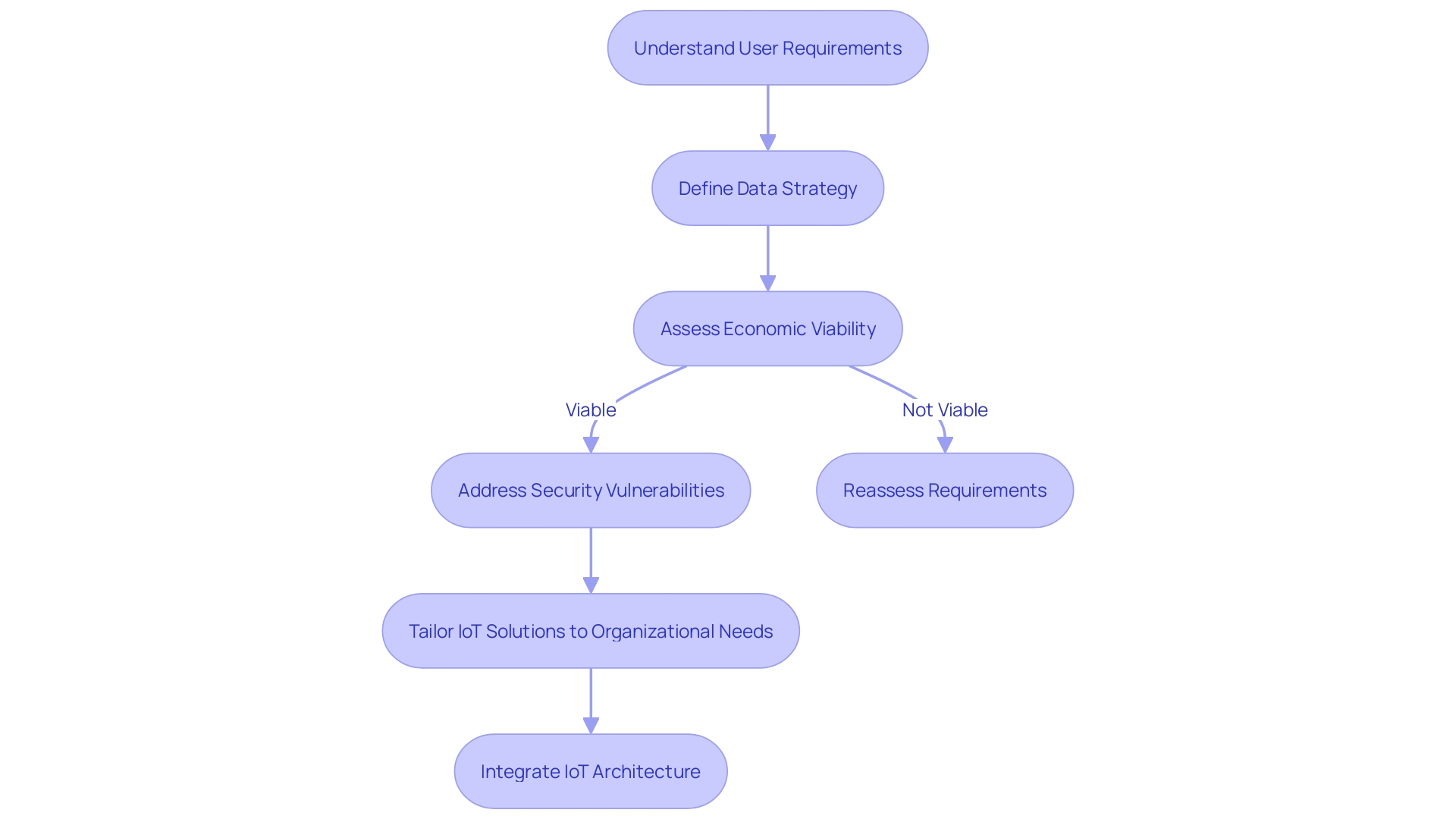
Benefits of IoT Consulting Services
Harnessing the power of IoT technology offers businesses a transformative edge, optimizing operations and fostering innovation. With the advent of Industry 4.0, defined by IoT Analytics as the integration of modern tech stack elements and supporting technologies, organizations can integrate diverse data sources, improve Overall Equipment Effectiveness (OEE), and enhance key performance indicators. This is particularly evident in manufacturing, mining, and oil and gas industries, where efficiency and cost-saving measures are paramount.
A case in point is the distinct operational goals that vary between sectors. For example, manufacturers typically prioritize operational efficiency and cost reductions, often employing on-premises technology architectures, including Programmable Logic Controllers (PLCs) and tethered connectivity. In contrast, other sectors may focus on customer satisfaction, revenue, and user interaction, illustrating the flexibility and adaptability of IoT solutions to different industry needs.
The value of IoT is underscored by market projections, with expectations that the global market for smart home automation alone will burgeon to $40 billion by 2020. This growth is fueled by It's ability to connect devices, allowing seamless communication and data exchange, which is crucial in both home automation and industrial settings.
Moreover, the importance of IoT software development cannot be overstated. It is the linchpin that enables devices to work in unison, providing critical insights and facilitating remote operations. As noted by expert Richard Beranek, a managing partner at Brash Product Development Inc., their firm encapsulates this synergy by combining a broad spectrum of services like electronics development and software design to create comprehensive IoT solutions.
In emphasizing best practices for IoT adoption, tailored training, accessible resources such as white papers and toolkits, and cross-functional workshops are key strategies for educating teams, particularly in sales, about the nuances and applications of new IoT software. This approach has been pivotal for the commercial success of IoT products, as highlighted by the success stories of IoT software vendors.
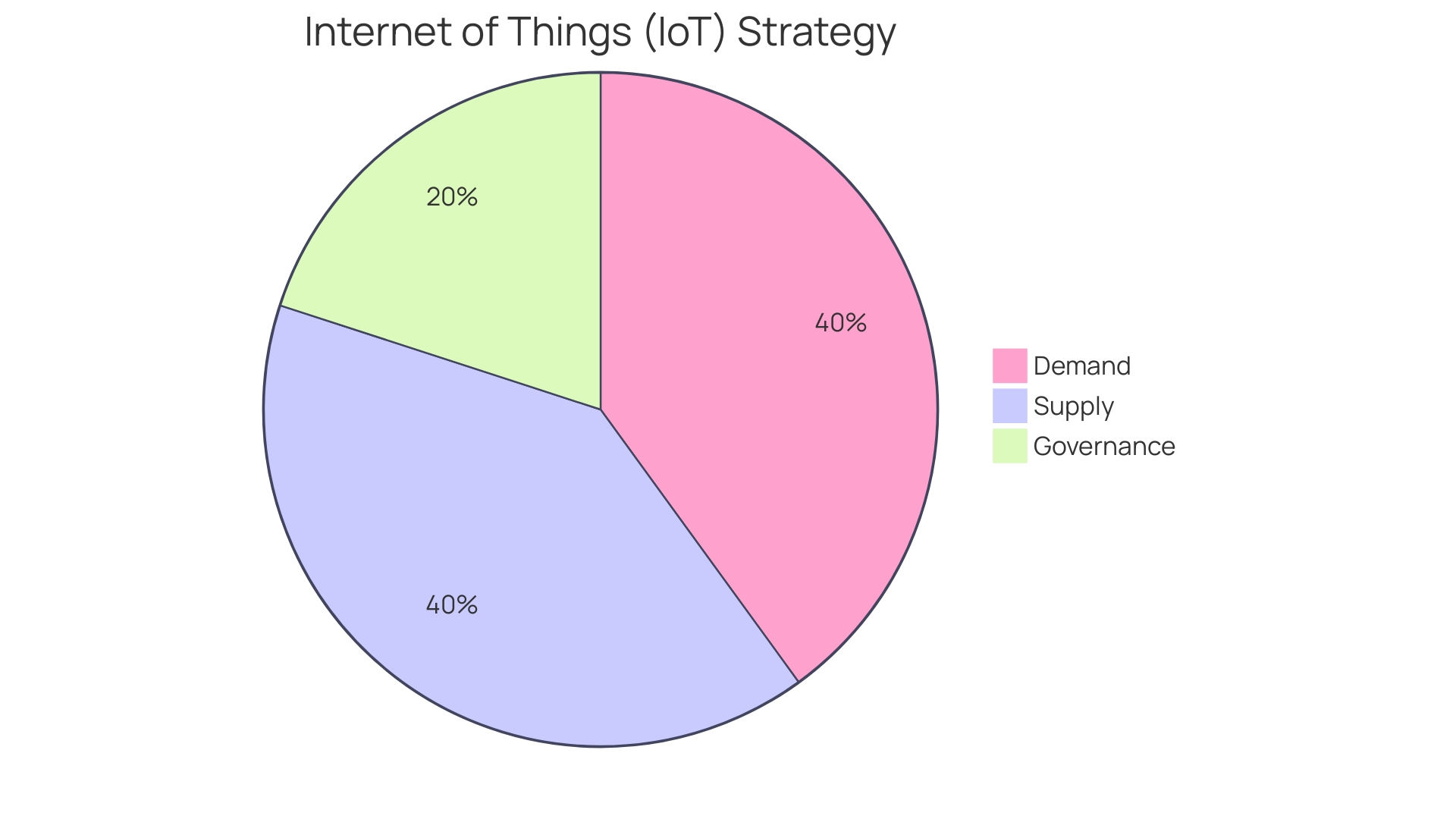
Improved Efficiency and Productivity
As the Internet of Things (IoT) continues to evolve, it's reshaping industries with its ability to connect devices, collect data, and automate processes. Companies harnessing the power of IoT are witnessing a transformation in productivity and efficiency. For example, Optimotion, an OEM established by CEO Guillermo Guereque, entered the IoT space and developed an automated solution for a water treatment chemical supplier.
This innovation allowed the supplier to monitor chemical usage and optimize dispensing, thereby meeting stringent government standards more effectively and reducing labor-intensive, error-prone manual processes.
Similarly, meal-kit manufacturer Gousto introduced the HighByte Intelligence Hub to manage data at the edge, resulting in enhanced mechanical availability and operational cost savings. This strategic move not only improved their operational efficiency but also supported Gousto's sustainability goals, exemplifying the impact of IoT on facilitating smarter, more efficient industrial operations.
Industry experts, including analysts from Gartner, anticipate IoT to expand by thirty percent in the coming years, signifying a major shift from traditional practices to a high-tech lifestyle. This expansion encompasses smart homes, cities, and industries, all contributing to energy conservation and pollution reduction. The broader term of IoT covers a vast array of applications, whereas the Industrial Internet of Things (IIoT) zeroes in on industrial applications, aiming to elevate processes through the extraction of data-driven insights.
The integration of Industry 4.0 technologies, such as IoT networks and cognitive computing, is instrumental in helping industries communicate and analyze data for informed decision-making. These technologies are pivotal in achieving higher Overall Equipment Effectiveness (OEE), reducing costs, and improving other key performance indicators relevant to production setups.
Embracing IoT and Industry 4.0 solutions is not without its challenges. However, as demonstrated by the various case studies and reports, the benefits of digital transformation, data integration, and predictive maintenance are clear. By adopting IoT solutions, businesses are not only optimizing their current operations but are also positioning themselves to integrate seamlessly into the future of Industry 4.0 and beyond.
Enhanced Data Collection and Analysis
The Internet of Things (IoT) is revolutionizing the way businesses operate, offering unparalleled opportunities for growth through the strategic use of data. IoT devices, with their capacity to connect and communicate, produce a vast array of data. This data, when captured and analyzed proficiently, can provide essential insights, driving operational efficiency and innovation.
For instance, by integrating modern technology stack elements, manufacturers are able to consolidate diverse data sources, enhancing Overall Equipment Effectiveness (OEE) and optimizing Key Performance Indicators (KPIs) pertinent to their production.
Understanding that the architecture of Industry 4.0 and Industrial Internet of Things (IIoT) varies greatly — with some systems prioritizing on-site technology components like Programmable Logic Controllers (PLCs) and others focusing on smart-connected products aimed at customer satisfaction — is critical for businesses aiming to harness IoT data effectively.
Successful IoT projects often begin with a clear profile of the business and a focused mission, which guide the data collection process. It is essential to first determine what data is necessary and how to capture it, ensuring that existing systems like Quality Management Systems (QMS) or Enterprise Resource Planning (ERP) are audited for available data and gaps are identified where additional data collection is required. This strategic approach to data management is vital in avoiding information overload and aligning data handling with analytical goals.
In the face of a projected increase in global data creation to over 180 zettabytes by 2025, businesses are challenged not only with data capture but also with securing and integrating this data into their operations. By implementing robust data management practices, organizations can ensure that relevant data is accessible for making informed decisions, thus avoiding the pitfalls of guesswork.
The case for effective data strategy is clear: data-driven decision-making is no longer optional but a critical component of competitive strategy. As IoT continues to expand, businesses that can leverage these technologies to improve customer satisfaction, reduce costs, and prolong the lifecycle of machinery will be the ones leading the charge into a more data-centric, efficient future.
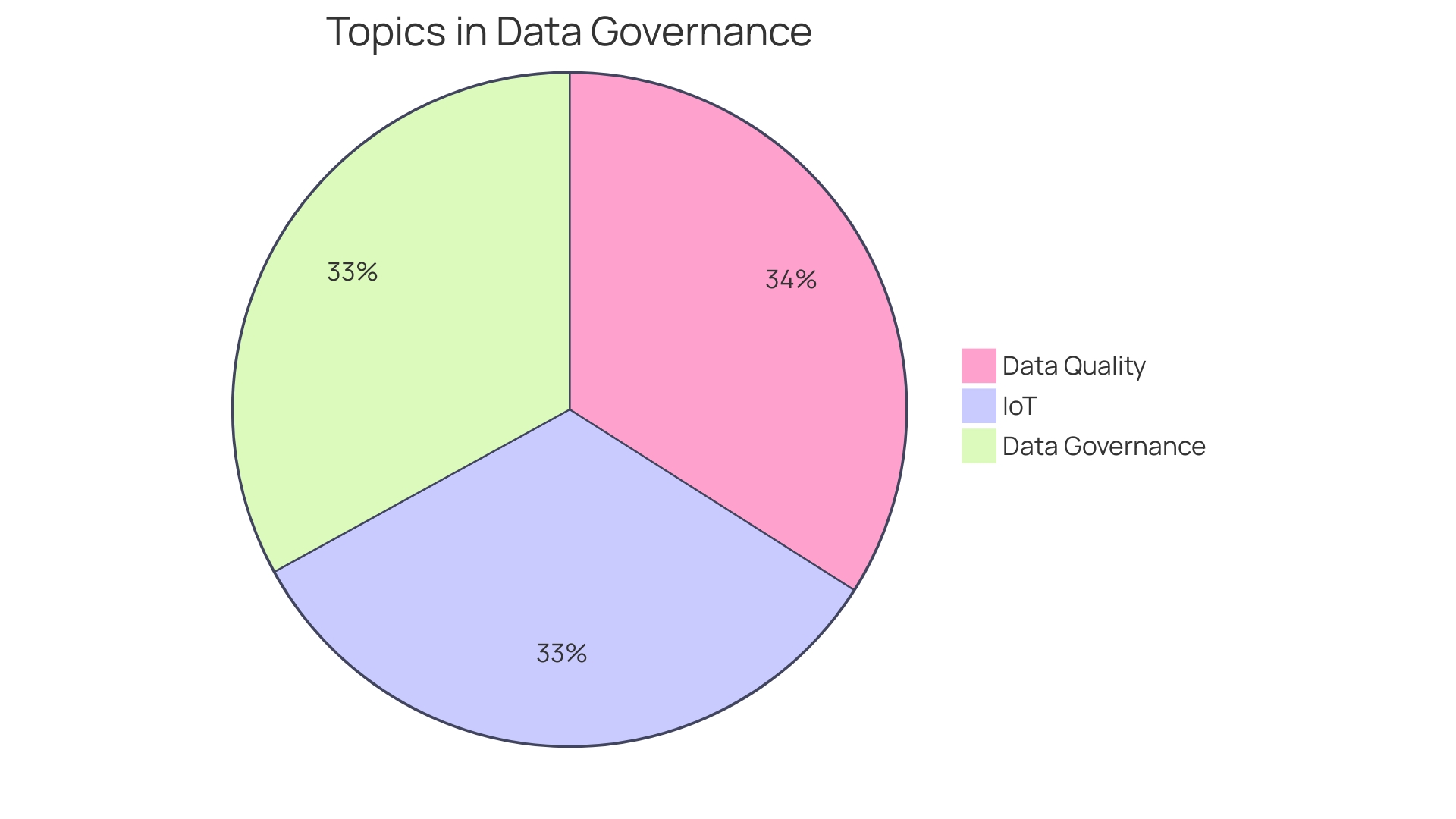
Cost Savings
Harnessing IoT consulting services offers businesses the opportunity to transform their operations in numerous ways. For instance, automation technologies enable companies to streamline workflows, reducing the need for manual intervention and thereby cutting labor costs. An example of such innovation is Bosch's solid oxide fuel cell (SOFC) system, which, with its digital twin technology, optimizes cost and performance over its lifespan.
Predictive maintenance, another key area where IoT consulting can add value, involves using advanced analytics to forecast equipment failures before they occur. This not only prevents costly downtime but also extends the lifespan of machinery. The predictive maintenance market is evolving rapidly, with cloud and on-premises solutions employing statistical methods and machine learning to anticipate maintenance needs, ultimately leading to significant cost reduction compared to routine maintenance practices.
Moreover, IoT can greatly improve energy management by implementing systems that monitor and control energy usage. This contributes to sustainability efforts and results in reduced operational costs. A case in point is the adoption of energy-efficient practices in manufacturing industries as part of their digital transformation journeys, which has been highlighted in 22 industrial case studies analyzing the integration of IoT and Industry 4.0 technologies.
In the realm of smart home automation, which is expected to reach a $40 billion market by 2020, IoT devices are making homes more energy-efficient, further illustrating the cost-saving potential of IoT in various sectors.
As the Internet of Things continues to expand, it is estimated to grow by thirty percent in the coming years, signaling a shift towards a more connected and efficient world where strategic implementation of IoT solutions can lead to substantial financial benefits for businesses.
Improved Customer Experience
Harnessing the power of IoT, businesses are revolutionizing the customer experience, crafting personalized interactions that resonate with customer needs and preferences. By integrating IoT solutions, retailers like are transforming the in-store experience, ensuring every detail from ambient temperature to product selection is tailored to shopper expectations. This shift towards a holistic shopping experience, where the digital and physical realms converge seamlessly, is key to fostering customer loyalty and satisfaction.
The transformation journey begins with a clear vision, aligning with the organization's mission and bolstered by staff support. It's about creating a culture that places the customer at the center of every decision. Smart use of IoT not only improves customer engagement but also streamlines operations, as seen with Vodafone's shift to cloud architecture, reducing the need for extensive manpower during product launches.
Recent reports indicate the smart home automation market is projected to reach $40 billion by 2020, a testament to the growing role of IoT in our lives. Companies embarking on the CX transformation journey must prioritize continuous improvement and staff training to navigate the ever-evolving consumer tastes and heightened service standards.
To implement customer-centric IoT solutions effectively, businesses must glean metrics and insights to pinpoint areas for enhancement, integrating these initiatives with overarching business goals. This strategic approach is underpinned by the increasing global trend towards connectivity, with manufacturers leveraging digital tools to enhance supply chain transparency.
In the sphere of IoT consulting, firms like Brash Product Development Inc. are pivotal, offering comprehensive services from electronics development to software design. These firms are instrumental in guiding businesses through the complexities of IoT integration, ensuring that connected devices function seamlessly to uphold the customer experience and meet the growing demand for data accuracy and device security.
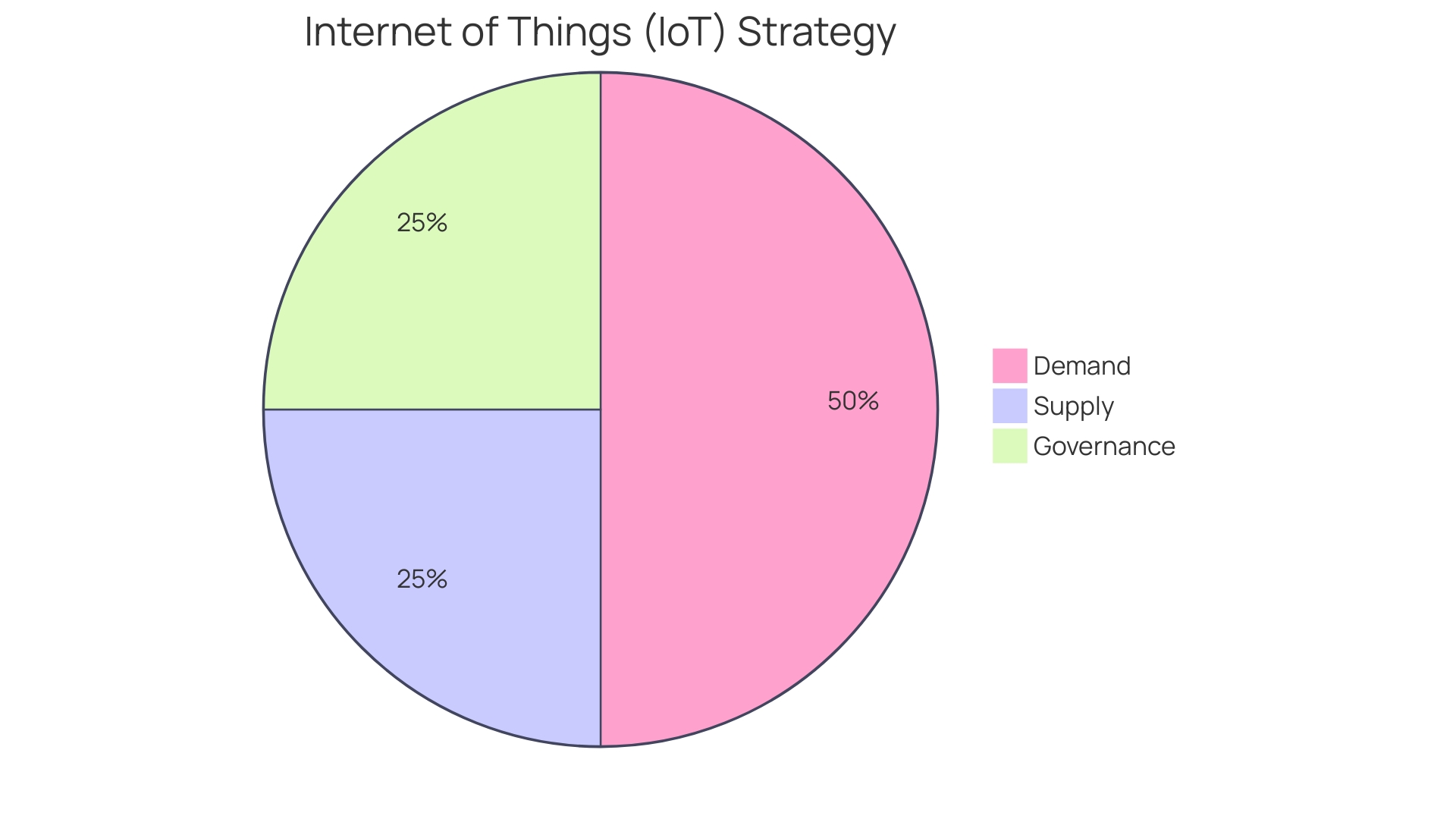
Key Components of IoT Consulting
-
Project Overview and Business Profile: Each IoT project starts with a comprehensive analysis, profiling the business and defining the project mission clearly. This includes understanding the company's industry, size, revenue, and specific operational goals. Whether the focus is on efficiency and cost-saving measures typical in heavy industries like manufacturing, mining, and oil & gas, or on customer satisfaction and revenue as seen in process industries, the starting point is always a thorough business overview.
-
Technical Aspects and Components: A successful IoT implementation involves a selection of key technical components. This includes the integration of modern technology stacks and supporting technologies that enable data source amalgamation and the optimization of key performance indicators (KPIs). In some cases, large on-premises technology architecture may be necessary, which could include programmable logic controllers (PLCs), tethered connectivity, and even hardware retrofits.
-
Adaptation to Industry 4.0: The IoT consulting approach has to be aligned with the principles of Industry 4.0, which involves leveraging technology to automate production and achieve higher overall equipment effectiveness (OEE). This could mean adopting new use cases or improving existing ones to enhance operational efficiency.
-
Customized Solutions and Product Engineering: Tailoring the IoT solutions to the specific needs of a business is paramount. It's not just about product development but also about innovation, quality, and time-to-market. From software development to hardware integration and process optimization, IoT consulting services cover all stages to ensure the product is not only functional but also a market leader.
-
Cost Considerations and Budgeting: Understanding the financial impact of IoT adoption is critical. Costs can vary significantly based on use case, industry, and deployment size, and can encompass hardware, software, connectivity, and manpower. A strategic approach to budgeting can help avoid costly oversights.
-
Learning from Peers and Case Studies: Examining case studies from peers or other industries is invaluable for gaining insight into digitalization. It helps identify common challenges, develop best practices, and understand scaling strategies. Real-world examples provide tangible evidence of the benefits and practical applications of IoT.
-
Security and Data Integrity: As the number of connected devices increases, so does the threat of cyberattacks. Ensuring the security of the IoT devices is essential for maintaining data integrity and trust in the system, especially when devices are used to monitor and control critical aspects of business operations.
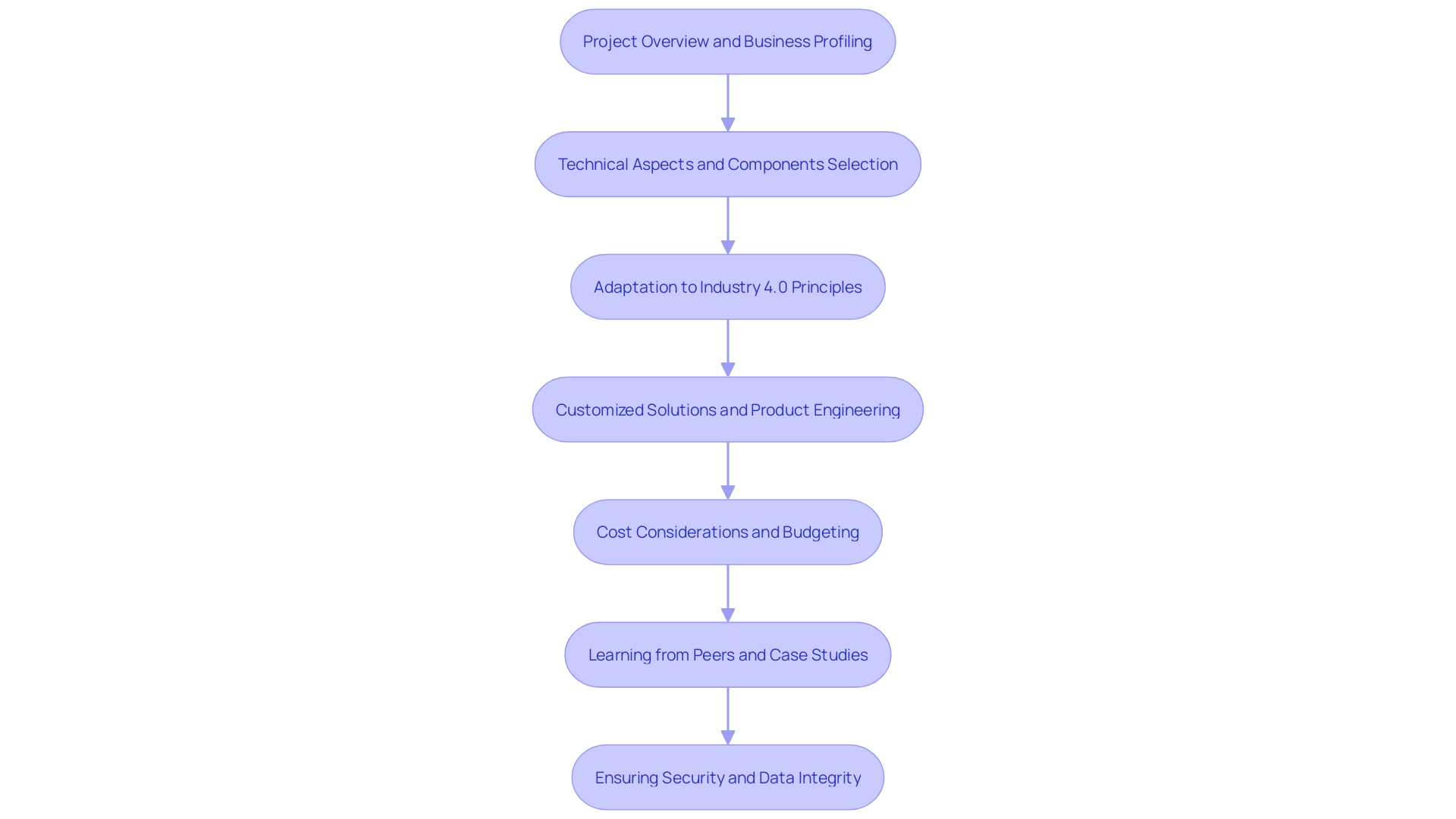
Needs Assessment
Embarking on an IoT integration journey requires a targeted approach to discern where the technology can be most beneficial. It begins with a meticulous needs assessment, pinpointing specific business goals and the challenges that IoT solutions can address. For example, in manufacturing, the application of IoT can streamline operations, enhance Overall Equipment Effectiveness (OEE), and bolster key performance indicators in line with Industry 4.0 paradigms.
This might involve leveraging advanced tech stacks or supporting technologies to merge disparate data sources, thereby reducing operational costs and boosting efficiency.
In contrast, service-oriented sectors, such as logistics, employ IoT to enrich customer satisfaction and foster revenue growth. Here, IoT devices not only track goods with precision but also ensure the integrity of data through robust security measures—crucial for maintaining trust in increasingly connected systems that are also becoming targets for cyber threats. Each IoT project undertaken should start with a complete profile analysis of the business, encompassing company specifics and core project goals, to tailor a solution that aligns with the overarching mission and delivers tangible results.
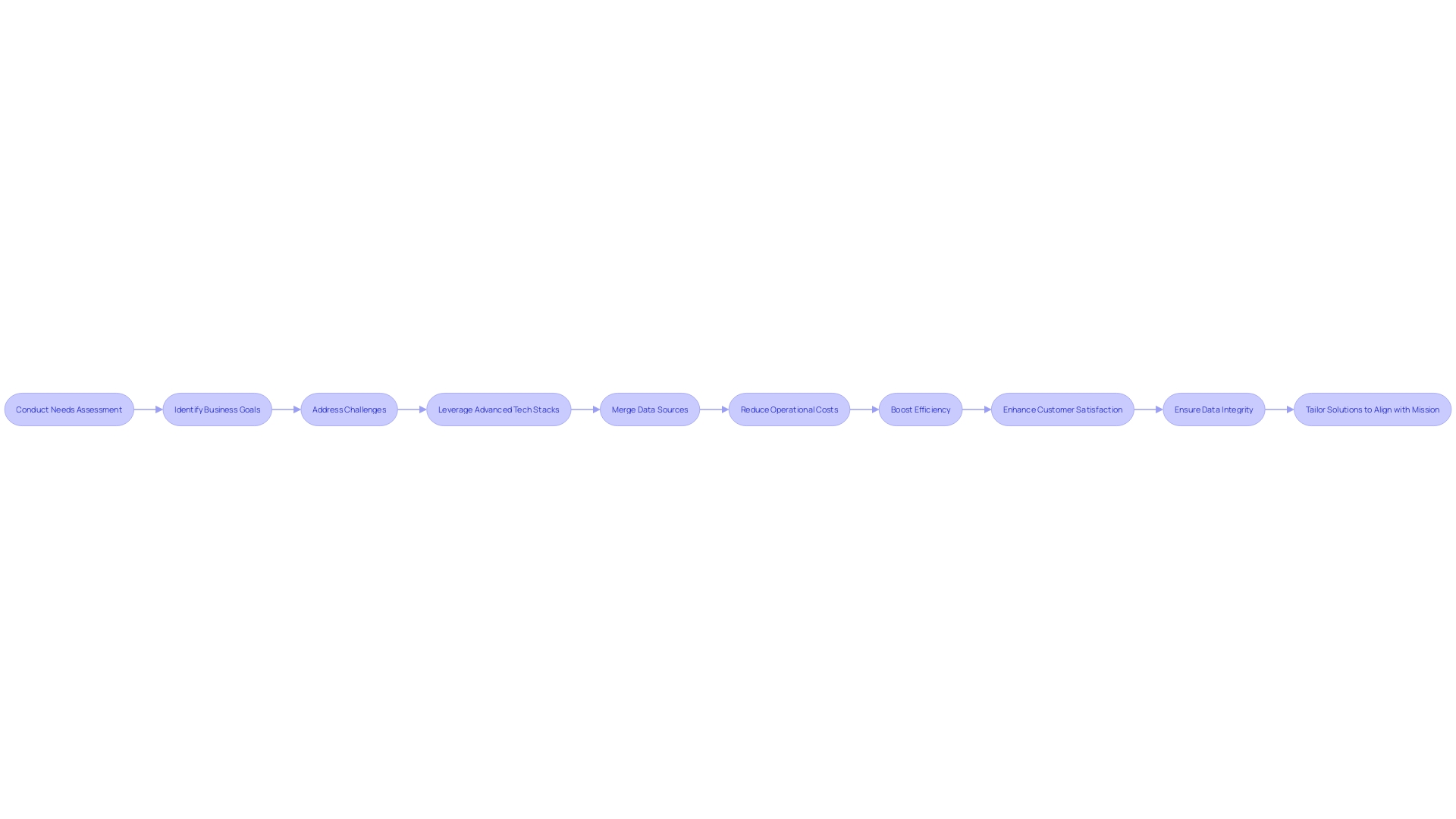
Strategy Development
The formulation of an IoT strategy is a meticulous process that begins with a comprehensive needs assessment. This initial phase involves understanding the user and their requirements in depth, ensuring that the strategy is user-centric from the outset. The strategy itself is a blueprint detailing the desired objectives, the selection of appropriate technologies, and a step-by-step implementation plan.
It also includes a projection of the anticipated outcomes.
For instance, the strategy might incorporate elements of Industry 4.0, which IoT Analytics defines as the use of modern tech stack elements or supporting technologies to integrate data sources, optimizing overall equipment effectiveness (OEE), and enhancing key performance indicators (KPIs) in manufacturing and related sectors.
Case studies in our Industrial IoT Case Study Report offer insights into the technical components, challenges, and best practices of real-world IoT implementations. These studies provide a profile of the businesses involved, their goals, and the key takeaways, serving as practical examples of IoT strategy in action.
News and trends further underscore the importance of IoT strategies. With the increase in connected devices globally, businesses are leveraging digital platforms and technologies to enhance their operations and supply chain management. However, this also brings to the forefront the critical need for cybersecurity measures within the IoT strategy, as the integrity of data is paramount.
Additionally, the strategy encompasses an IoT Architecture Definition tailored to the organization's capability to adopt the technology, ensuring a precise and relevant solution is architected to meet business needs. It also addresses the economic potential of the IoT system, evaluating both the software and hardware requirements, as well as the integration of cloud solutions.
The strategy culminates in a monetization framework and an actionable plan, which includes conducting workshops, assessments, and constructing a solid business case to ensure a clear understanding of the requirements and strategic direction. This holistic approach to IoT strategy formulation is designed to steer organizations towards achieving their operational and customer satisfaction goals, ultimately leading to increased revenue and market success.
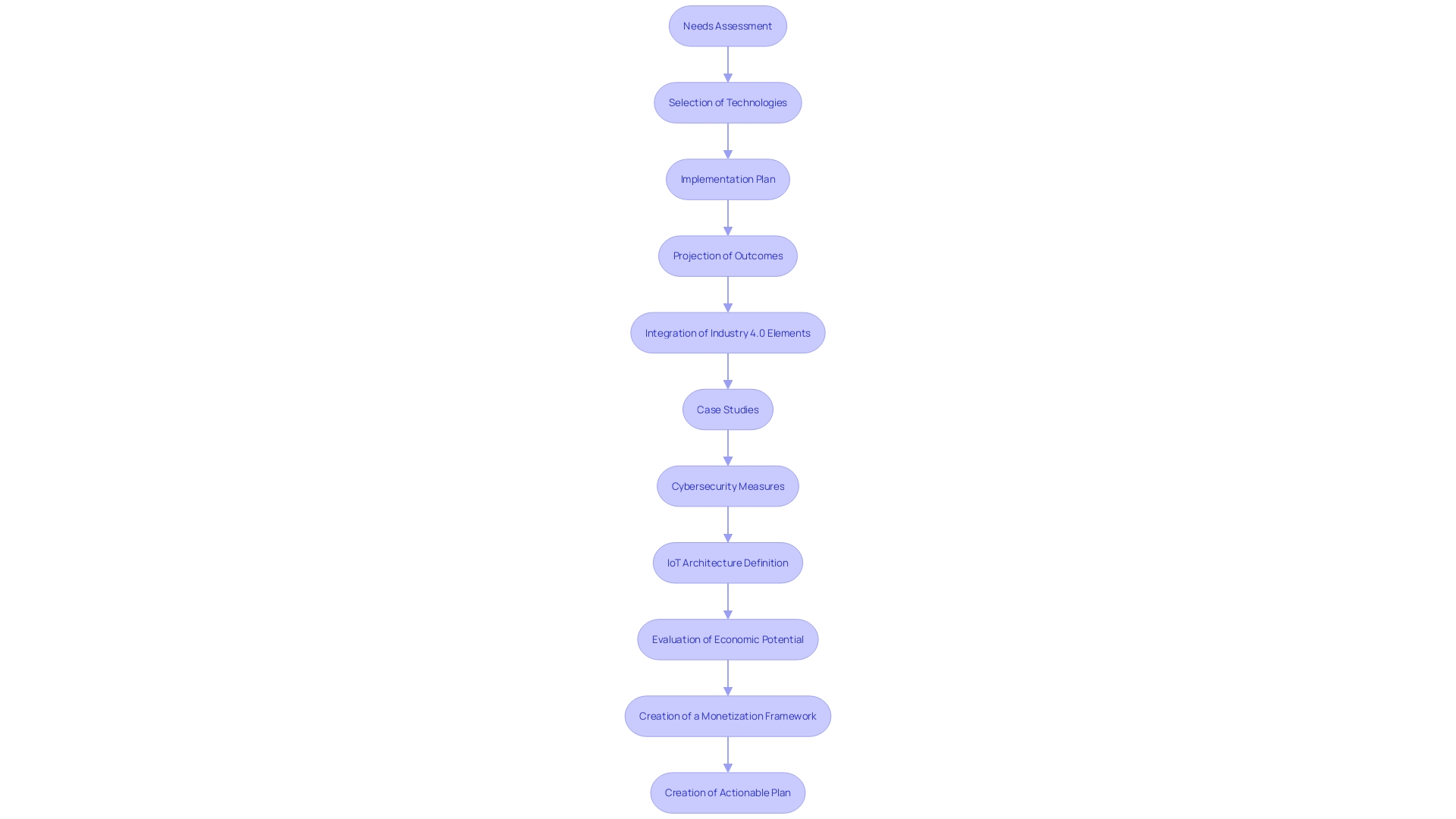
Solution Design
Crafting an IoT solution that meshes seamlessly with a business's strategy is a multifaceted endeavor, embracing the selection of appropriate devices, platforms, and connectivity options. The breadth of IoT's impact is exemplified by its infiltration into our daily lives, from smartwatches monitoring health and fitness to smart meters enabling efficient energy use. In the industrial sphere, the stakes are higher with diverse applications ranging from automated home systems to complex manufacturing setups known as Industry 4.0.
Here, It is the linchpin for integrating data sources, elevating operational efficiency (OEE), and optimizing key performance indicators (KPIs).
Selecting the right IoT technology stack is critical. For instance, a wireless gateway and IoT module are the conduits for device internet connectivity, defining the scope and reliability of a connected ecosystem. The technology's choice is pivotal, influencing not only the functionality but also the sustainability of the product line.
This is underscored by forthcoming EU battery regulations aimed at enhancing the sustainability of IoT devices, reflecting a deepening concern for the environmental footprint of technology.
Success in IoT also hinges on security, as the increasing prevalence of connected devices has escalated the risk of cyber threats. Reliable and secure devices are the foundation of trust in any IoT system, especially as connected devices are projected to play an even more significant role in our lives, with the smart home automation market anticipated to reach $40 billion.
Each IoT venture is unique, and understanding the nuances is key. Detailed case studies offer insight into the technical components, challenges, and best practices, tailoring solutions to specific operational goals—whether it's efficiency and cost savings for manufacturers or customer satisfaction for consumer-focused products. Ultimately, the right blend of technology, team, and understanding of market dynamics propels IoT projects from concept to reality, ensuring they are not only disruptive and differentiated but also aligned with the broader mission of the business.
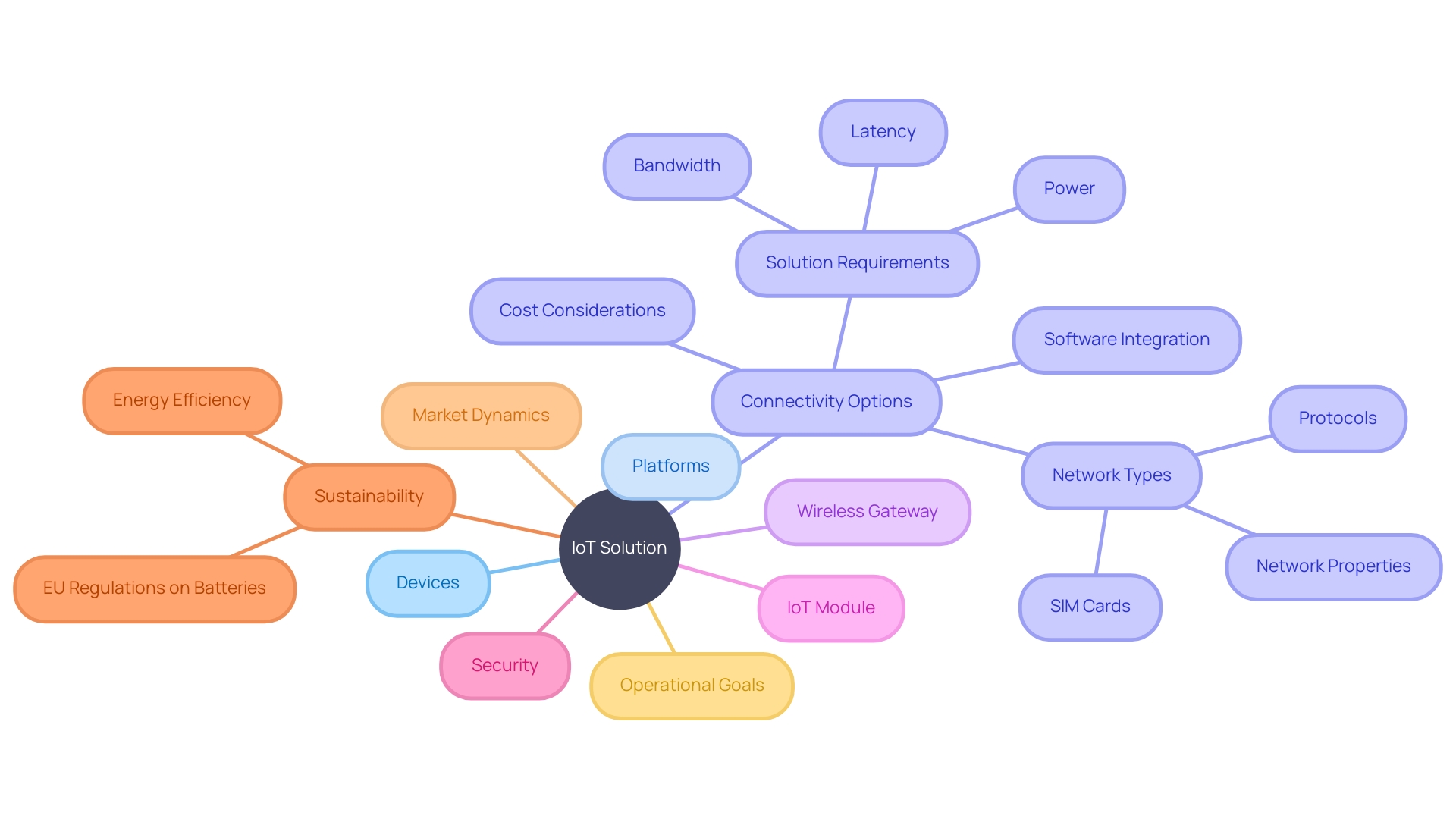
Implementation and Integration
The transition from concept to practical application of IoT solutions is a critical phase where businesses often seek expert guidance. To seamlessly integrate IoT technology into existing systems, it's essential to address various technical components. The process involves meticulous configuration of IoT devices, establishing communication protocols that ensure devices can 'talk' to each other and the network, and the harmonization of these new elements with legacy systems.
It's akin to assembling a complex puzzle where each piece must fit perfectly to create a complete picture, supporting operational goals such as improved efficiency and cost reduction.
For a more concrete understanding, consider how manufacturers view Industry 4.0: some focus on technology architecture with a significant on-premises component, involving Programmable Logic Controllers (PLCs) and hardware retrofits, prioritizing operational efficiency. Others aim for smart-connected products enhancing customer satisfaction and interaction. Each approach demands a tailored integration strategy that aligns with the overarching business objectives.
Embracing IoT connectivity is not just about the technological upgrade—it's a strategic investment. Whether it's through SIM cards, specific protocols, or network properties, each choice has its implications for power, bandwidth, latency, and overall cost. Effective IoT implementations also mandate robust software integration, allowing for real-time data access, predictive maintenance, and comprehensive analysis that feed into data-driven decision-making and innovation.
Success stories across sectors showcase IoT's capacity to optimize operations and enhance customer experiences. For instance, a company specializing in garden lighting leveraged a Bluetooth Mesh network to control their products, setting a precedent at a time when such technology was nascent. Similarly, the logistics industry is increasingly utilizing digital platforms and tracking devices to refine supply chain management, highlighting IoT's expansive potential.
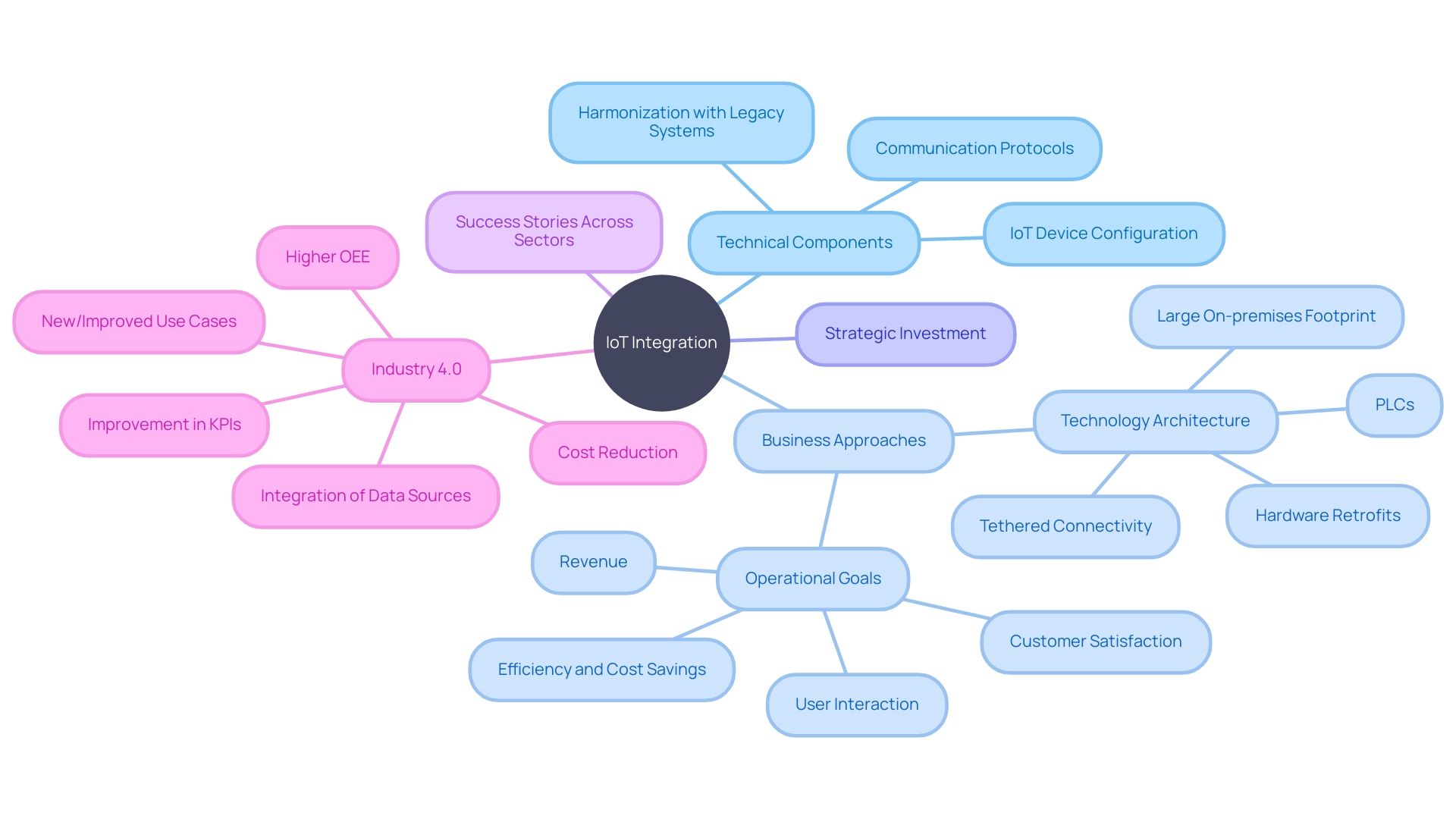
Testing and Quality Assurance
To ensure the success of IoT initiatives, rigorous testing and quality assurance protocols are essential. Such processes scrutinize the IoT solution's reliability, security, and performance, serving as a critical step to pinpoint and rectify any issues before deployment. In the context of Industry 4.0, manufacturers are utilizing advanced tech stacks and supporting technologies to integrate data sources, improve Overall Equipment Effectiveness (OEE), and enhance Key Performance Indicators (KPIs) for production.
This focus is evident in how operational goals are tailored—some aiming for efficiency and cost reductions, while others prioritize customer satisfaction and revenue generation. An exemplary case study would begin with an in-depth overview of a business, including its mission and the pivotal learnings from the project, coupled with a technical breakdown of the IoT components and providers involved. Reflecting on the advancements in the IoT domain, Robin Duke-Woolley, CEO of Beecham Research, emphasizes the importance of architecting for scalability, security, and reliability from inception, as well as embracing flexibility for continuous innovation during the pilot phase.
The rapid evolution of IoT is mirrored in the growing smart home automation market, projected to hit $40 billion by 2020. Moreover, a white paper detailing connectivity aspects underscores the significance of understanding solution requirements, network types, software integration, and cost considerations to circumvent common challenges and facilitate a seamless transition from concept to execution. It also illustrates successful IoT applications across various sectors, showcasing the transformative potential of the technology to optimize operations and elevate customer experiences.
As the first World Quality Report highlighted, the aim has always been to guide companies in enhancing their quality and testing strategies more effectively, efficiently, and economically.
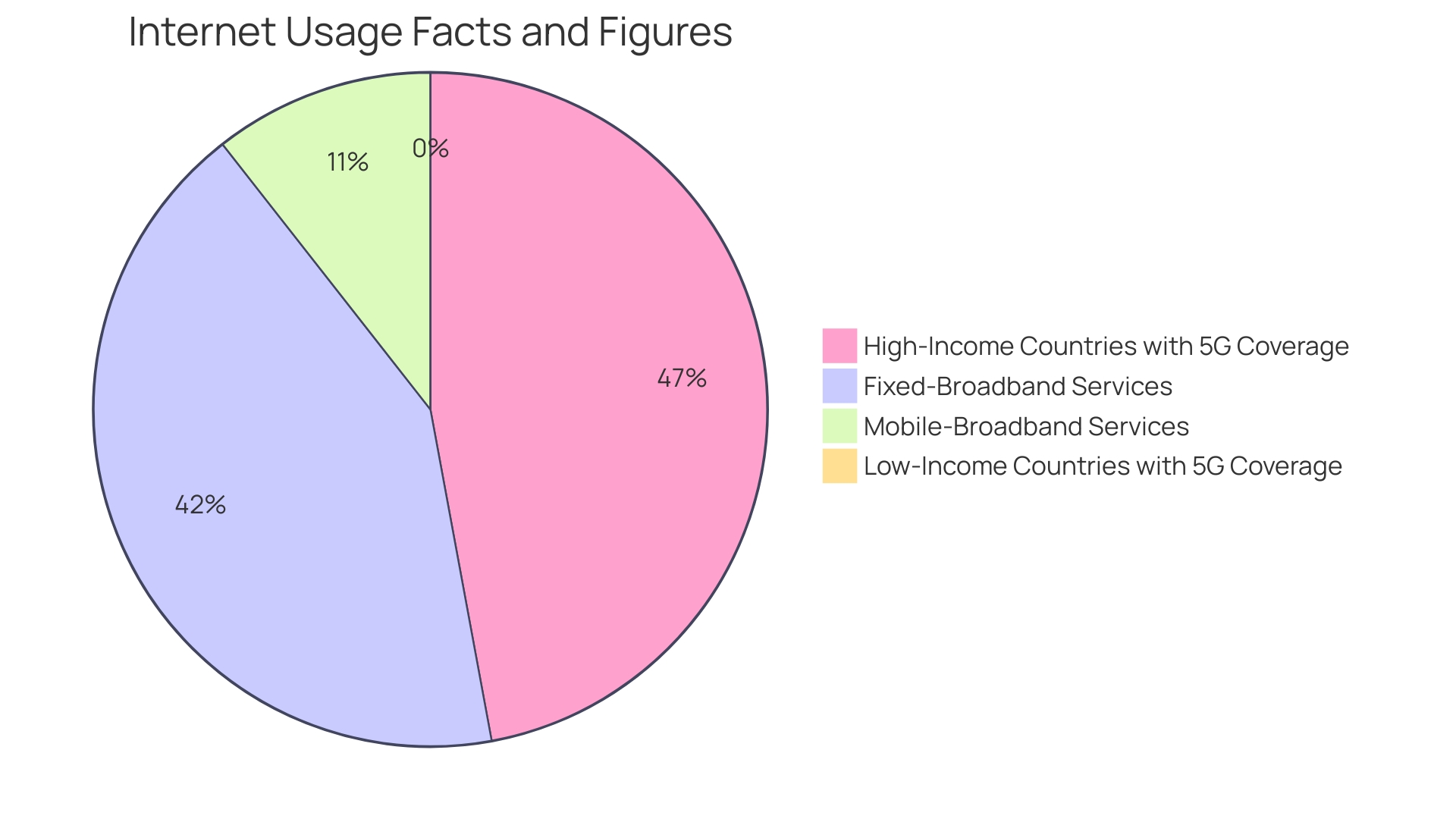
Training and Support
IoT consulting firms are instrumental in bridging the gap between the conceptual and practical applications of IoT technology. They play a crucial role in training and upskilling the workforce to adeptly handle the advanced systems, ensuring that businesses not only adopt IoT solutions but also maximize their potential. Comprehensive training programs are tailored to cover essential areas such as device management, data analytics, and the resolution of technical issues, empowering employees to utilize IoT solutions effectively.
For instance, in the context of Industry 4.0, IoT consultants provide education on integrating various data sources to enhance operational efficiency and performance, a concept rooted in the modern tech stack of Industry 4.0. This is particularly beneficial for manufacturers who are looking to leverage IoT for higher Overall Equipment Effectiveness (OEE) and cost reductions.
The value of such consulting extends to addressing challenges specific to industries. For example, in sectors like chemicals, pharma, or oil and gas, where operational goals are heavily centered around customer satisfaction and revenue, IoT consultants can guide businesses to focus on user interaction through smart-connected products.
Moreover, the global market trend shows an increasing demand for IoT integration in everyday life, such as home automation, which is projected to reach a $40 billion valuation by 2020. This underscores the importance of having a well-trained team that can pivot towards customer-centric IoT solutions.
Lastly, with the rapid expansion of the IoT and IIoT industry, it is essential for companies to stay competitive. As digital data becomes increasingly valuable, a mere 7% of companies have fully realized their digital transformation strategies. IoT consultants are pivotal in helping businesses analyze and quantify existing operational issues to avoid market share loss, which 55% of companies without a digital transformation plan fear may happen within a year.
With the right training and support, businesses can confidently navigate the complexities of IoT and harness its full potential for operational excellence and innovation.
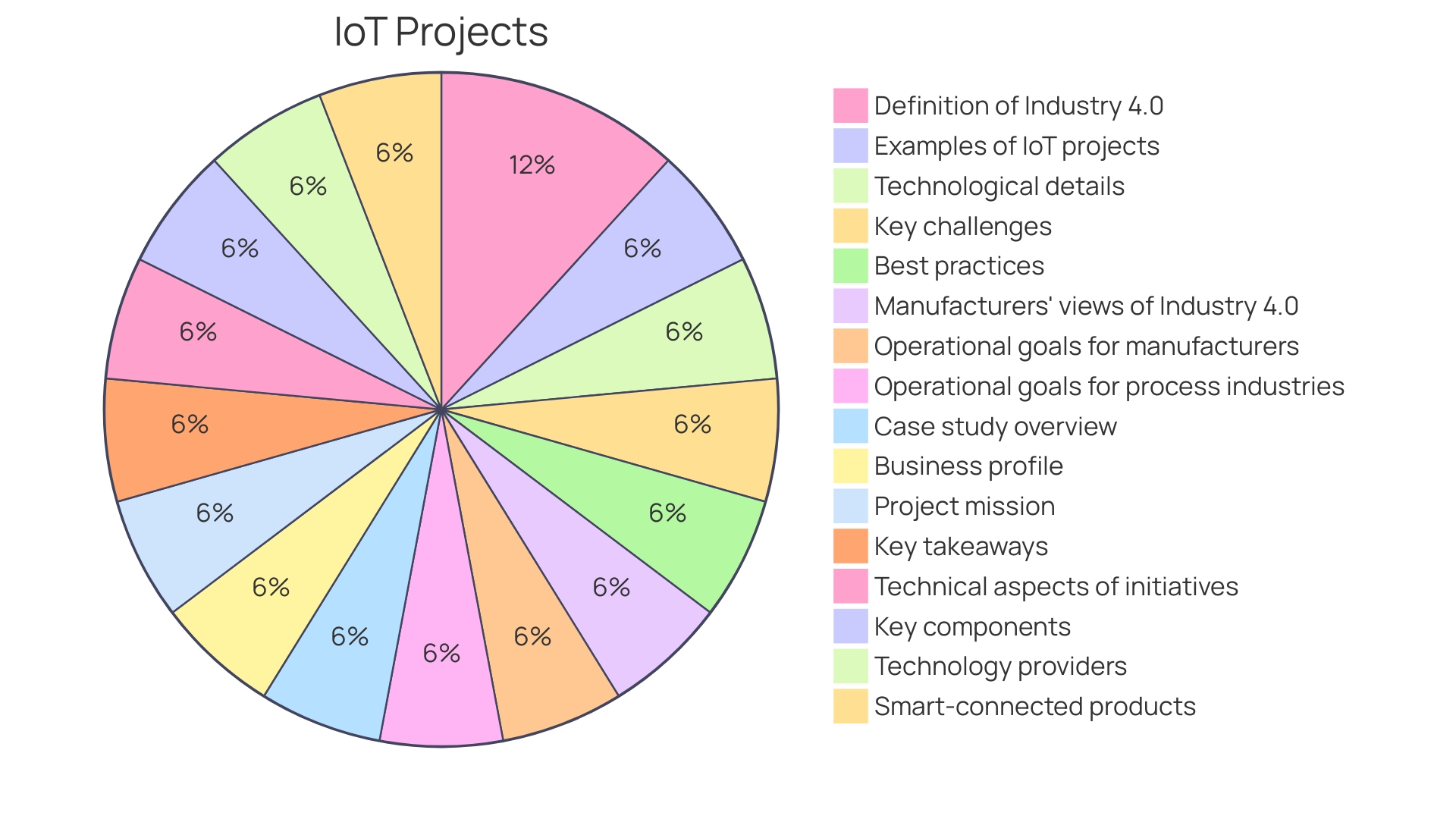
Steps Involved in IoT Consulting
IoT consulting unfolds in a series of meticulous steps designed to tailor a strategy that fits the unique requirements of a business. Initially, a thorough analysis of the business profile is conducted, encompassing the company's background, the industry it operates in, and its size. The consulting process then dives into the project's mission, evaluating key objectives and intended outcomes.
With a focus on aligning with Industry 4.0 principles, IoT consulting companies utilize modern tech stack elements or supporting technologies to help manufacturers integrate different data sources. This integration aims to enhance Overall Equipment Effectiveness (OEE), reduce costs, and improve other relevant Key Performance Indicators (KPIs) for production setups.
The approach varies significantly across industries. For instance, manufacturers may prioritize operational efficiency and cost savings, leveraging technology architectures that include Programmable Logic Controllers (PLCs) and tethered connectivity. In contrast, other sectors might emphasize customer satisfaction and interaction, choosing to invest in smart, connected products that enhance the user experience.
To support the development of IoT strategies, consultants assess an organization's readiness to adopt new technologies and design a solution architecture that meets the business's unique needs. This involves making key decisions on the economic potential of the IoT product or system, software and hardware requirements, and the integration of cloud solutions to form a comprehensive technical solution.
Security is a crucial consideration throughout this process. It is essential to identify potential vulnerabilities and develop strategies to secure technological aspects against potential breaches. By following these best practices, IoT consulting companies guide businesses through the complexities of IoT integration, leading to more informed, strategic decision-making and a robust implementation plan.

Initial Consultation
An IoT consulting company begins its journey with clients by conducting a thorough initial consultation. This foundational step is crucial as it allows the firm to deeply understand the business's vision, the obstacles they face, and their unique needs. This process isn't just about gathering information; it's about carving out a tailored strategic path that aligns with the company's aspirations and operational realities.
By focusing on the company's objectives and the specific challenges inherent in their industry, the consulting firm can craft a precise scope of work that addresses the client's situation. This might involve delving into the intricacies of Industry 4.0, exploring the potential of smart-connected products, or providing a roadmap for integrating various data sources to boost operational efficiency and achieve key performance indicators. With a clear understanding of the client's goals, the consulting firm is better equipped to offer customized, scalable solutions that not only solve current problems but also position the business for future growth and success in the digital economy.
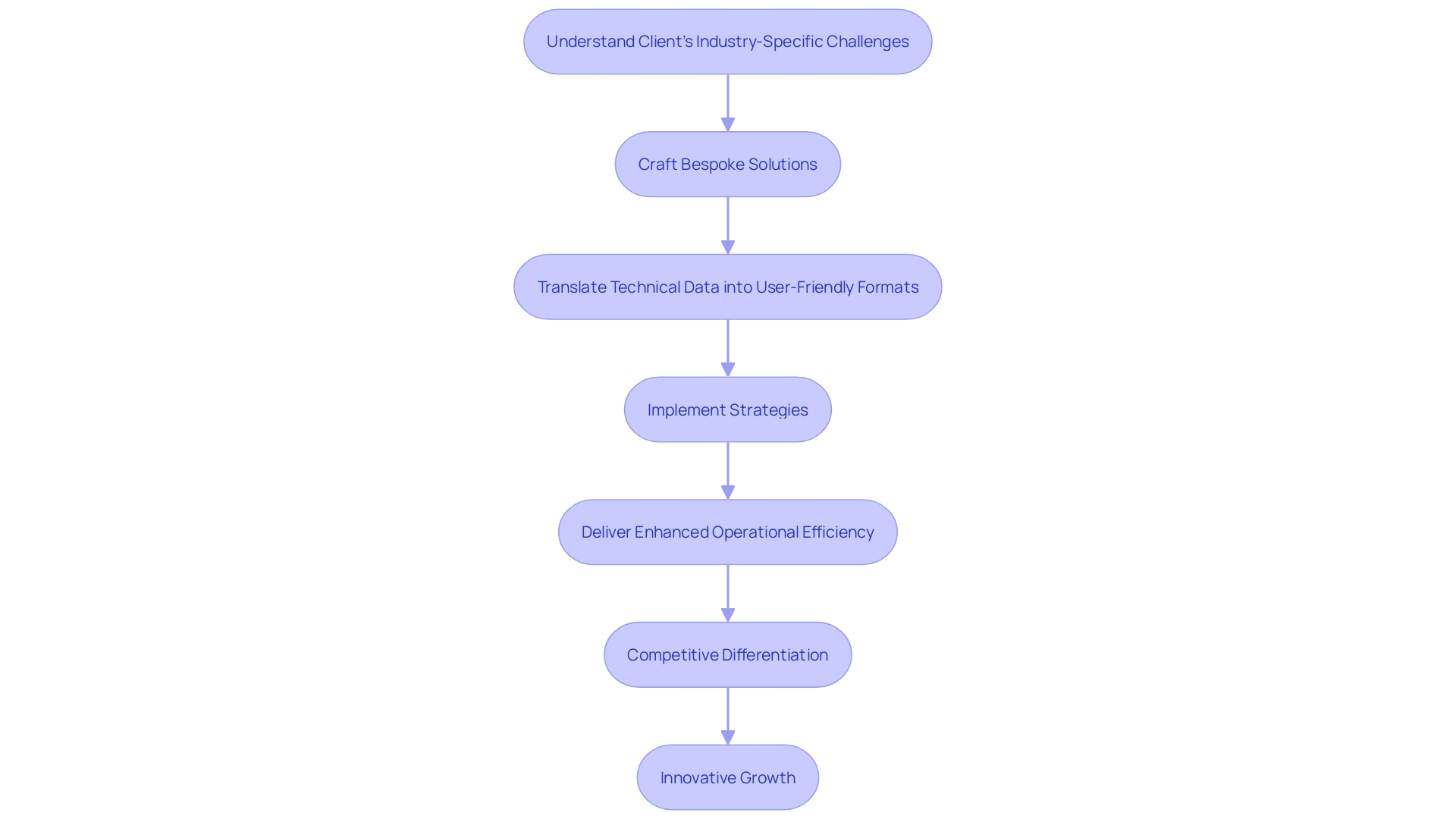
Assessment and Analysis
A thorough and meticulous examination of a business's existing infrastructure, processes, and technological environment is fundamental to unlocking the full potential of IoT. By dissecting these areas, a consulting team can pinpoint precisely where IoT can infuse value and proactively forecast potential hurdles that might emerge during the implementation phase. Understanding these dynamics is crucial because, as recent industry reports demonstrate, there is no one-size-fits-all approach to IoT deployment.
The integration of modern Industry 4.0 technology stack components enables businesses to amalgamate data sources, thereby enhancing overall equipment effectiveness (OEE), reducing costs, and boosting key performance indicators relevant to production settings. Insights into 22 industrial digital transformation case studies reveal a spectrum of strategies employed, including digital transformation, data architecture, predictive maintenance, AI, and industrial 5G applications.
The decision-making process for IoT projects varies significantly across industries; for some, an upgraded Enterprise Resource Planning (ERP) system marks the initial stride towards digital transformation. Other organizations embark on a buy-and-integrate path, procuring complete software solutions or modular components that seamlessly blend into their existing technological ecosystems. This approach contrasts with the bespoke build approach, which 47% of surveyed entities adopted, with 40% reporting that their custom solutions surpassed expectations.
Despite the variances in approaches, a common theme resonates: the quantity and quality of data are paramount. As articulated by an industry leader, leveraging high-quality data coupled with expert insights can substantially enhance operations, even outside the realm of AI. This underscored the importance of not only gathering data but also ensuring it's accessible to those who need it most.
To this end, IoT consulting firms play a pivotal role in guiding businesses through the labyrinth of options to architect solutions that align with their unique objectives, whether it's streamlining efficiency, augmenting customer satisfaction, or driving revenue growth.
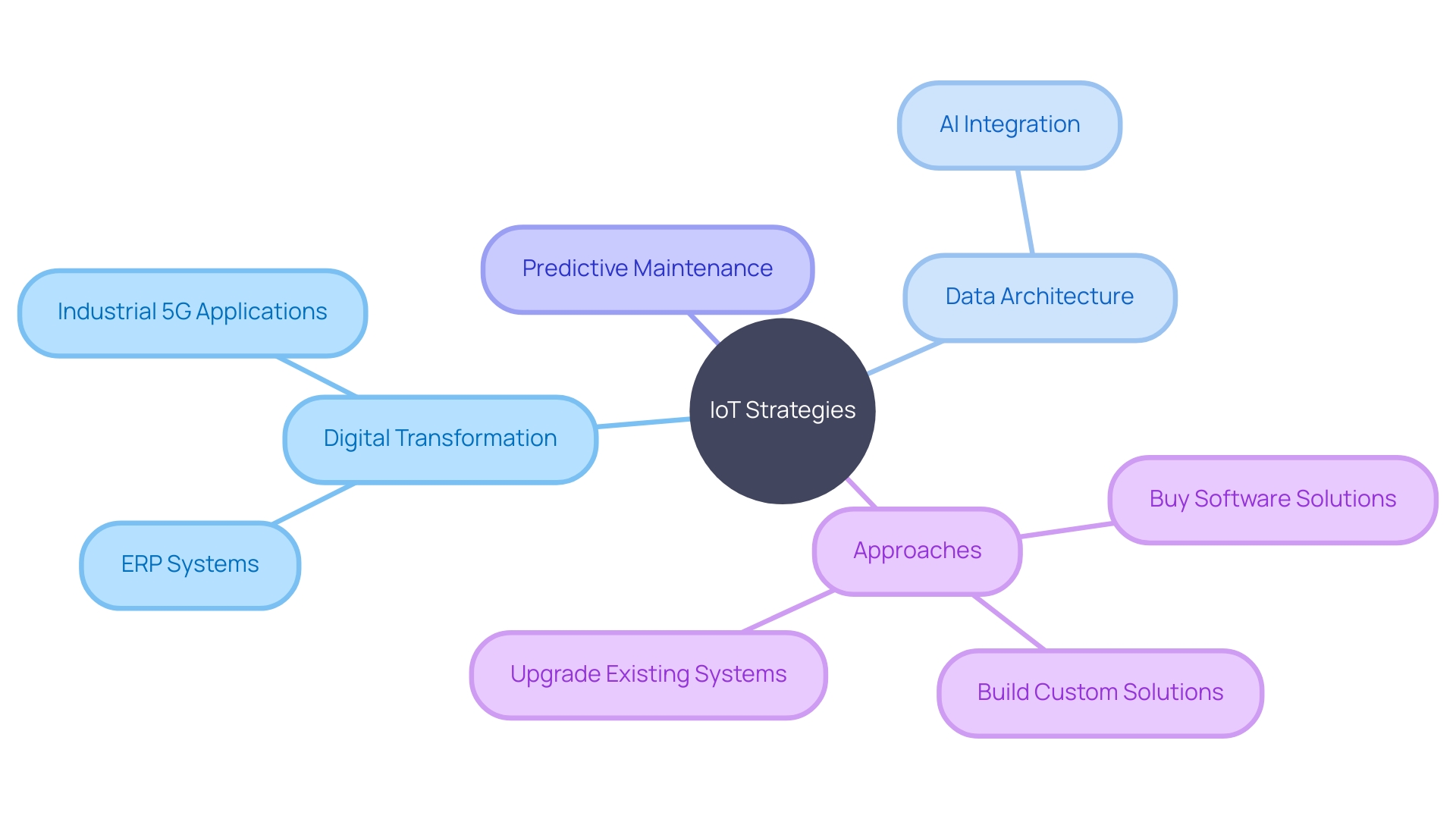
Strategy Development
In crafting an IoT strategy, consulting teams meticulously align the technological roadmap with a company's broader goals. This tailored strategy not only specifies the IoT solutions that are most applicable but also sketches out a comprehensive implementation plan, delineating the expected benefits. For instance, in the realm of manufacturing, this might involve leveraging the principles of Industry 4.0 to integrate disparate data sources, enhance Overall Equipment Effectiveness (OEE), and drive down costs.
A nuanced understanding of the industry's technology architecture is vital, such as recognizing the need for large on-premises footprints in some sectors versus prioritizing customer satisfaction and revenue growth in others. Industry case studies reveal a spectrum of operational goals and outcomes, from ERP upgrades as a foundational step in digital transformation to predictive maintenance and AI implementation.
Recent case studies across 22 industrial digital transformations spotlight diverse IoT and Industry 4.0 endeavors, offering insights into real-world challenges and triumphs in scaling digital initiatives. With a global market projection reaching $40 billion by 2020 for smart home automation alone, the impact of IoT strategies is widely felt, reshaping daily life and business operations. As consulting teams navigate these complex landscapes, they draw from an array of case studies to inform their strategies, ensuring that the IoT solutions proposed are not only cutting-edge but also pragmatic and well-suited to each unique business context.
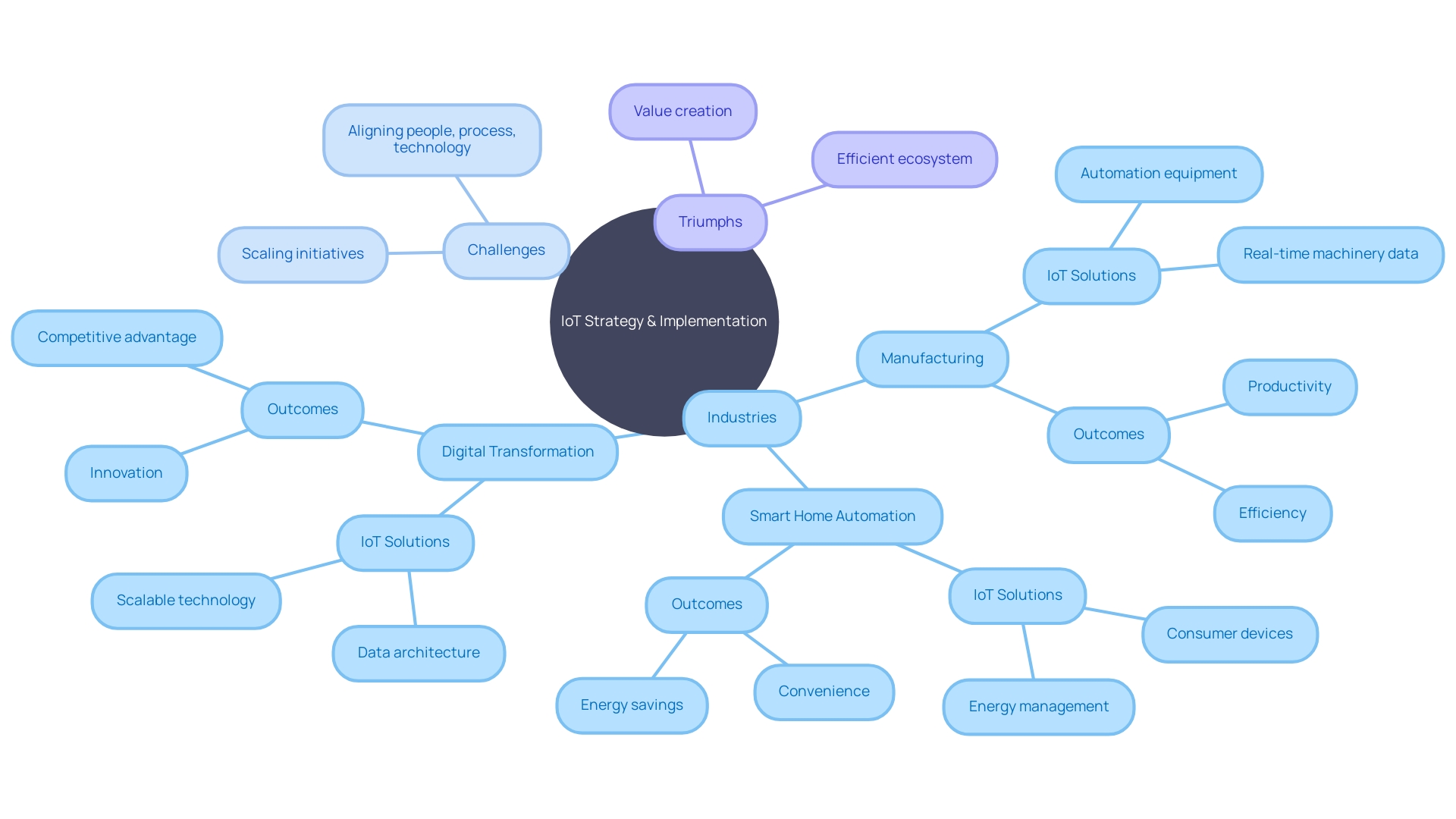
Solution Design
Crafting an IoT solution tailored to a business's unique needs is a meticulous process that involves a strategic selection of devices, platforms, and connectivity options. This process is not merely about picking hardware and software but about architecting a system that is scalable, secure, and reliable from its inception. As highlighted by experts, the pilot stage is critical for testing both the business process and technical infrastructure, necessitating a design that allows for flexibility and continuous innovation.
A successful IoT strategy hinges on the integration of various data sources, which can lead to improved Overall Equipment Effectiveness (OEE), cost reductions, and the achievement of key performance indicators (KPIs), especially in the context of Industry 4.0. This modern industrial revolution is characterized by the adoption of technologies that enable manufacturers to optimize production and operational efficiency. However, the technology architecture for Industry 4.0 varies significantly across industries, with some requiring extensive on-premises infrastructure, like Programmable Logic Controllers (PLCs) and tethered connectivity, while others focus on smart-connected products to enhance customer satisfaction and revenue.
In practice, selecting the appropriate IoT module—a component that uses radio technologies to ensure connectivity within the IoT ecosystem—is crucial. It determines how reliably products can stay connected, ultimately affecting the longevity of a product line. Therefore, decisions regarding wireless gateways and IoT modules need to be made with a long-term perspective, considering both current and future applications.
Real-world case studies provide an overview of these technical considerations, offering insights into the essential components and technology providers that have driven successful IoT implementations.
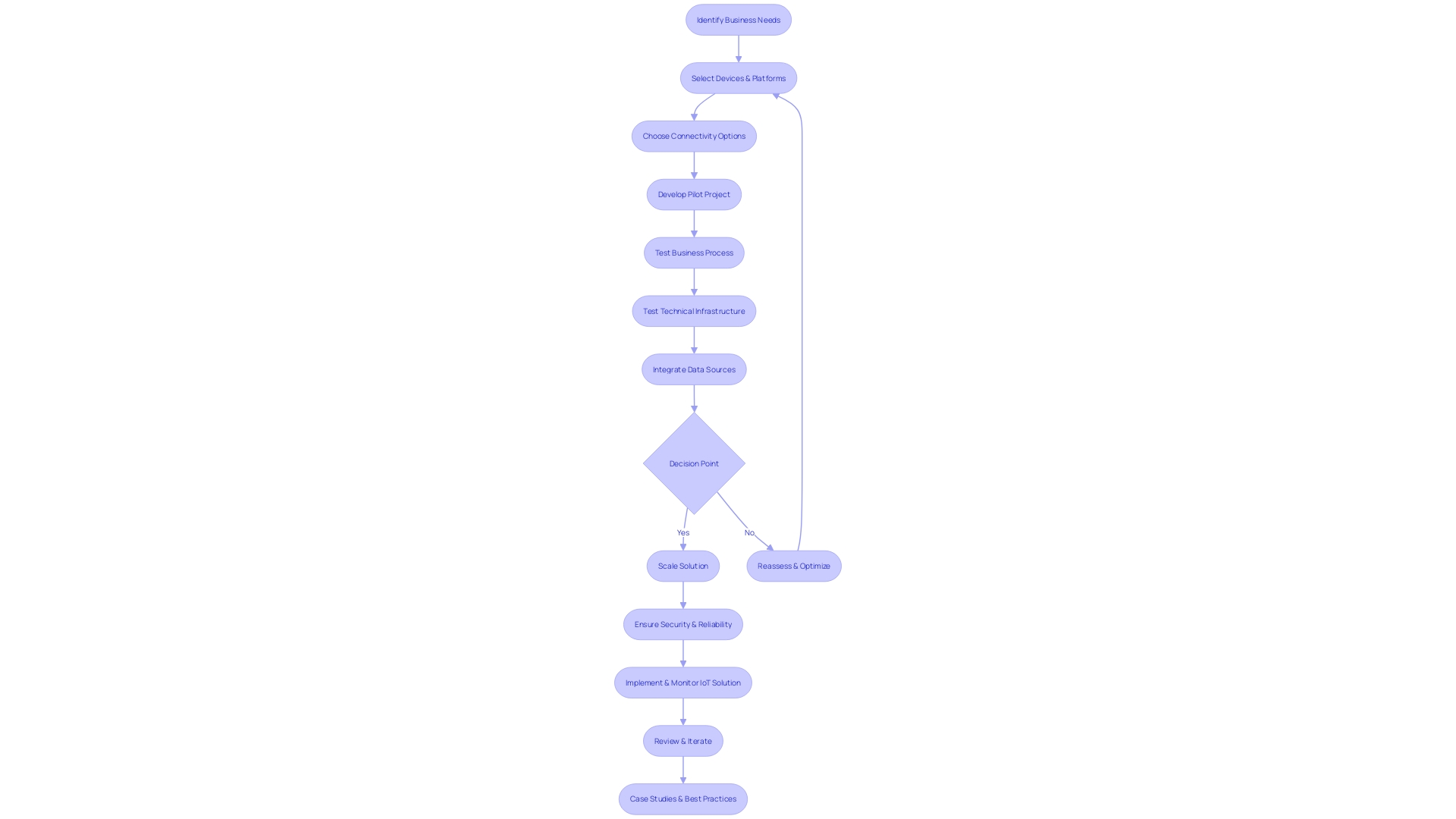
Implementation and Integration
The process of bringing an IoT solution from design to full operation is multifaceted and complex. Consultants play a crucial role in this journey, ensuring the seamless integration of IoT technology into existing infrastructures. They handle the technicalities of configuring devices, establishing communication protocols, and ensuring that the new network harmonizes with the current systems and workflows.
By leveraging their expertise, consultants can transform traditional industrial devices into intelligent, interconnected components of a larger ecosystem. These devices then contribute to the overall efficiency and agility of the manufacturing process, providing valuable insights into production, supply chains, and customer interaction. As It becomes increasingly prevalent across various sectors, with a predicted surge in the smart home automation market to $40 billion, the importance of robust and secure IoT integration cannot be overstated.
This is especially relevant given the rising threats of cyber attacks alongside the expansion of connected devices. Informed by case studies and industry reports, consultants are not only technical implementers but also strategic enablers, helping businesses navigate the evolving landscape of Industry 4.0 and the Industrial Internet of Things (IIoT).
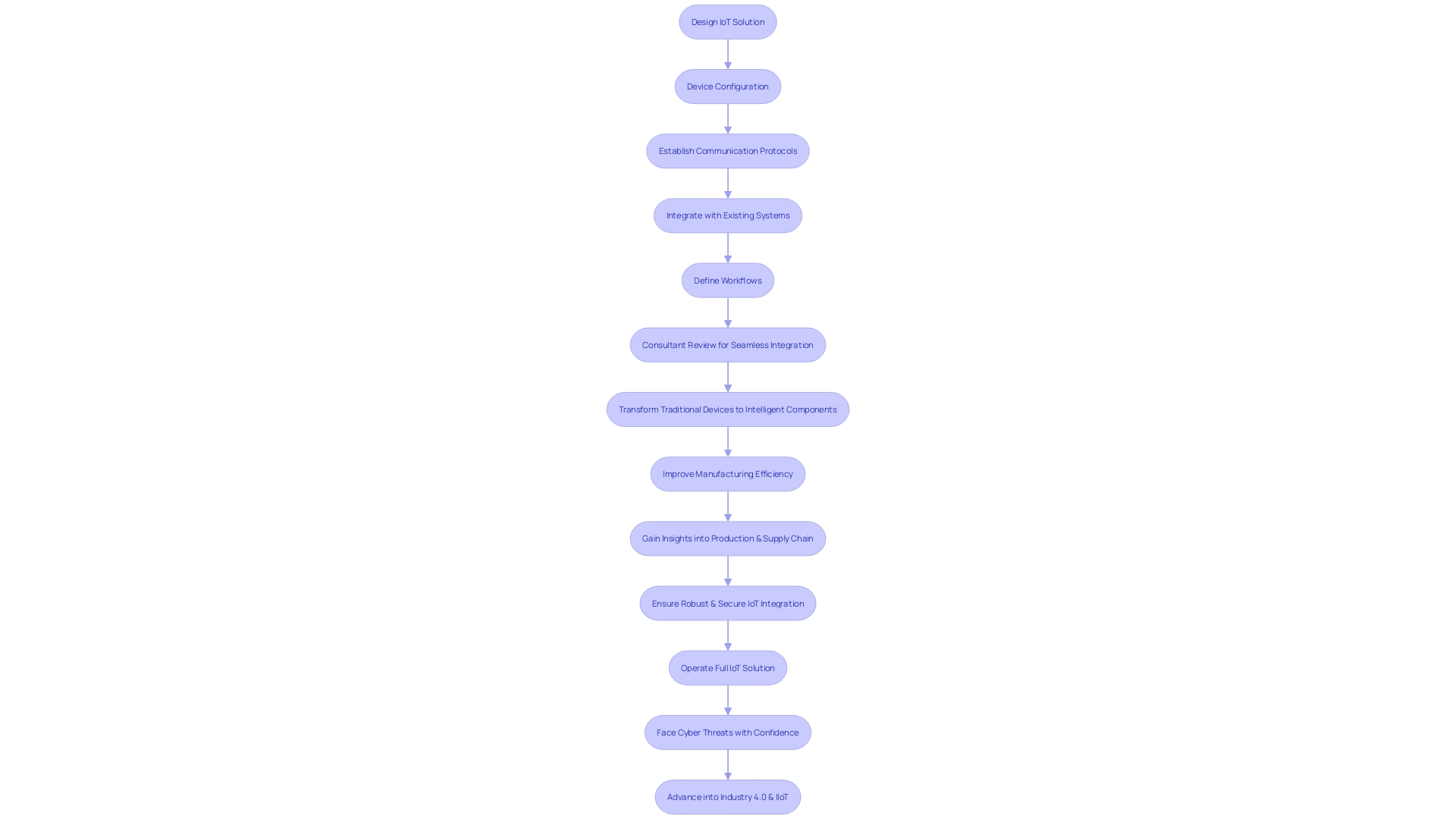
Testing and Deployment
For an IoT solution to truly deliver on its promises, meticulous testing is indispensable. It's not just about functionality; one must consider how the solution will behave under real-world conditions, its resilience against cyber threats, and its ability to maintain performance over time. This rigorous validation phase is critical to identify and resolve potential issues before the solution enters the production environment, where it will interact with actual users and processes.
Drawing insights from leading industry practices, including those highlighted in our Industrial IoT Case Study Report, successful IoT deployments often involve smart-connected products and a technology architecture that can include PLCs, tethered connectivity, and even hardware retrofits. These projects underscore the operational goals tailored to specific industries, whether focused on efficiency and cost savings, or customer satisfaction and interaction.
According to Beecham Research, the IoT landscape is evolving, as evidenced by the integration of home automation technologies into daily life. This progression towards a connected world has significant implications for how IoT solutions are tested and deployed, with an eye towards scalability and continuous innovation.
In light of the diverse approaches to implementing IoT—whether it's a 'buy-and-integrate' or custom-built solution—it's clear that there is no one-size-fits-all strategy. The decision-making process is nuanced and industry-specific, as the research indicates. For instance, a recent trend shows a growing preference for 'buy' approaches in newer projects, highlighting the desire for proven and standardized solutions.
Ultimately, each phase of an IoT solution's lifecycle, from concept to deployment, is crucial. The journey doesn't end with the solution going live; it marks the beginning of continuous monitoring, maintenance, and improvement to ensure that it remains effective, secure, and advantageous to the business it serves.
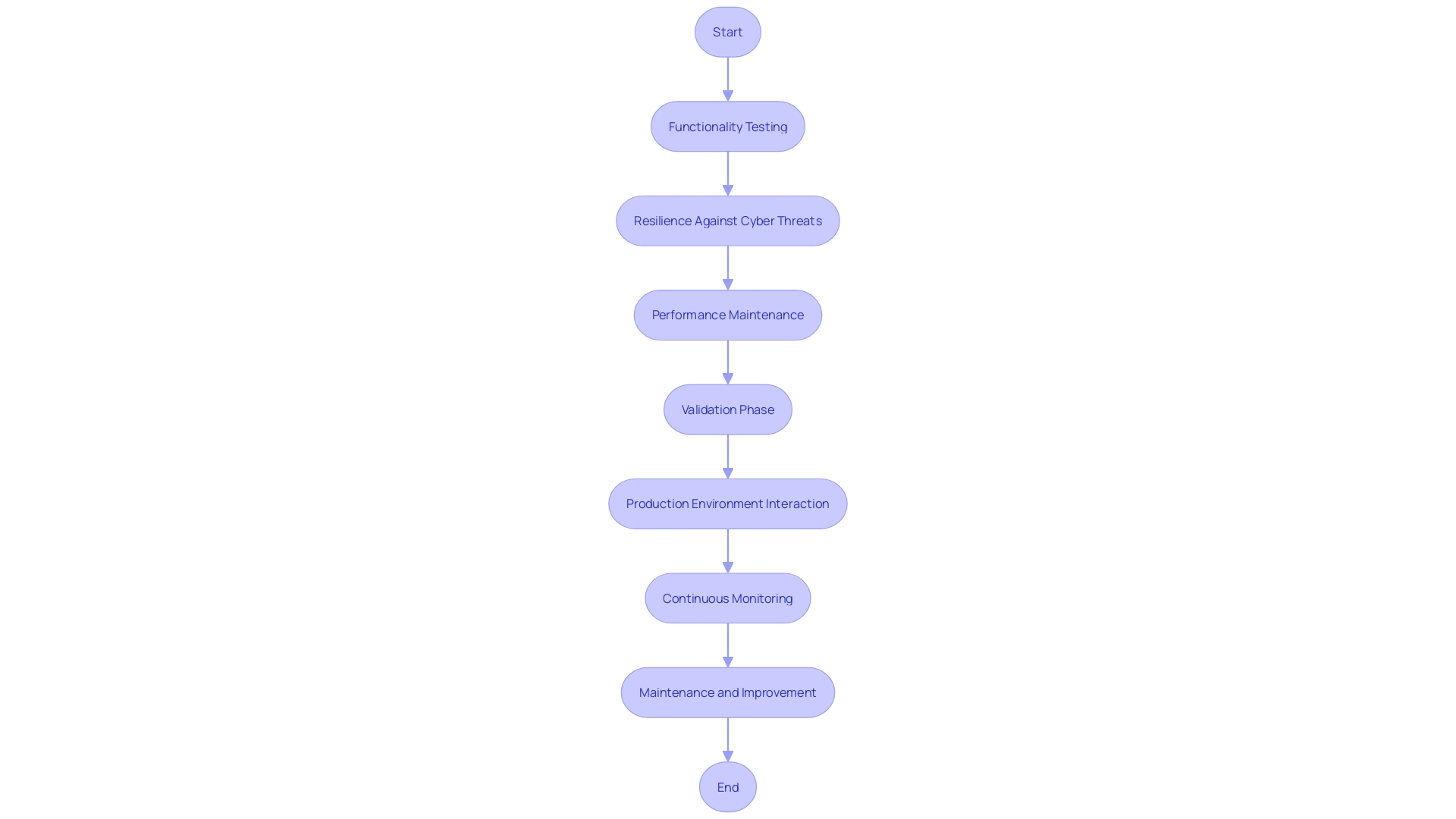
Monitoring and Optimization
Post-implementation, IoT consulting firms don't just hand over the keys and move on; they stay engaged, ensuring the interconnected ecosystem they've helped create is not only functioning but also thriving. The team vigilantly tracks the newly deployed IoT solution's performance, delving into the intricacies of data analytics, managing the multitude of devices, and tuning system operations for peak performance.
The importance of such monitoring and optimization cannot be overstated. As the Internet of Things becomes increasingly woven into the fabric of industries—from smart homes to smart manufacturing—keeping these systems in top condition is crucial. Gartner's analysts have illuminated the rapid 30% growth trajectory of IoT, underscoring the shift towards a high-tech lifestyle across smart cities, industries, and transportation, among others.
In this connected world, vast quantities of data in varying formats are generated by IoT devices, necessitating robust and sophisticated data management to extract actionable insights. Without strategic data handling, the deluge of information can be overwhelming, leading to inefficiencies or even paralysis in decision-making. To this end, IoT consulting teams work tirelessly, applying their expertise to ensure that the transformative potential of IoT technologies is fully realized.
The manufacturing sector, for instance, has undergone a digital metamorphosis in recent years, with companies leveraging IoT to enhance productivity and cater to evolving consumer preferences. Beecham Research's insights into the smart home automation market, expected to surge to $40 billion by 2020, exemplify IoT's expansive role in daily life. This trend is echoed across industries, where digital twins, augmented reality, and AI are becoming commonplace tools for innovation.
To navigate the complexities of such digital transformations, businesses often look to case studies for guidance. These narratives provide a window into the successes and hurdles of peers, offering a treasure trove of best practices. Whether it's upgrading an ERP system or addressing challenges in asset monitoring, these real-world examples serve as beacons for others embarking on their own IoT journeys.
In essence, the role of an IoT consulting company transcends the mere deployment of technology. It's about fostering an environment where continuous improvement is the norm, ensuring that operational goals—be the efficiency, cost savings, or customer satisfaction—are not just met, but exceeded. The consulting team's ongoing support and optimization are the linchpins in this ever-evolving ecosystem, propelling businesses towards a smarter, more connected future.

Types of IoT Consulting Services
IoT consulting services are tailored to meet the diverse needs of businesses, adapting to the unique challenges and objectives each company faces. One key area where IoT consultants provide expertise is in Industry 4.0 transformations. By leveraging modern tech stack elements or supporting technologies, consultants assist manufacturers to integrate data sources effectively, thereby enhancing their Overall Equipment Effectiveness (OEE), reducing operational costs, and improving other critical performance indicators.
Consulting services are not one-size-fits-all; they reflect the dual perspectives that manufacturers may hold regarding Industry 4.0 and the Industrial Internet of Things (IIoT). For some, the focus is on a technology architecture with substantial on-premises components, such as Programmable Logic Controllers (PLCs) and tethered connectivity, aimed at achieving efficiency and cost reductions. Others prioritize operational goals centered around customer satisfaction, revenue growth, and user interactions, often through smart-connected products.
The customized approach of IoT consulting is underscored by detailed case studies. Each begins with an in-depth overview profiling the business, outlining the project mission, and summarizing key takeaways. The technical aspects are not overlooked, with a clear exposition of the key components and technology providers involved.
In the backdrop of a growing global trend of connected devices, IoT consultants play a crucial role in ensuring data accuracy and device security, which are foundational to trust in any deployed IoT solution. As highlighted by industry experts, the increasing number of connected devices comes with heightened cybersecurity risks, making the consultant's role even more critical.
By drawing from a multifaceted pool of expertise in engineering, industrial design, and software development, IoT consulting companies offer a turnkey solution encompassing electronics development, mechanical engineering, UI/UX design, enclosure design, and software development for web and mobile platforms. This holistic approach is pivotal, especially in sectors such as medical devices, consumer electronics, and of course, IoT.
Thus, IoT consulting services are far from static; they are dynamic and responsive to the evolving landscape of technology, industry needs, and global economic factors, as evidenced by insights from earnings calls and industry reports. By staying attuned to these trends, IoT consultants help businesses navigate the complexities of digital transformation effectively.
Strategy Consulting
Developing a robust IoT strategy is critical for businesses aiming to integrate smart technologies into their operations. This process begins with a thorough market analysis to understand current trends and future projections. For instance, the smart home automation market is anticipated to hit a substantial $40 billion valuation by 2020, demonstrating the rapid adoption of IoT devices.
A strategic approach would also examine the competitive landscape, taking cues from 22 industrial case studies that reveal digital transformation initiatives encompassing data architecture and predictive maintenance. These studies highlight the operational focus on efficiency and cost-reduction, with manufacturers employing modern Industry 4.0 technologies to integrate data sources and optimize key performance indicators (KPIs). Each case study provides detailed insights, from technological components to the roles of various technology providers, ensuring a comprehensive understanding of IoT implementations.
By aligning IoT strategies with business goals, companies can navigate this complex field to enhance customer satisfaction, streamline operations, and ultimately drive significant revenue growth.
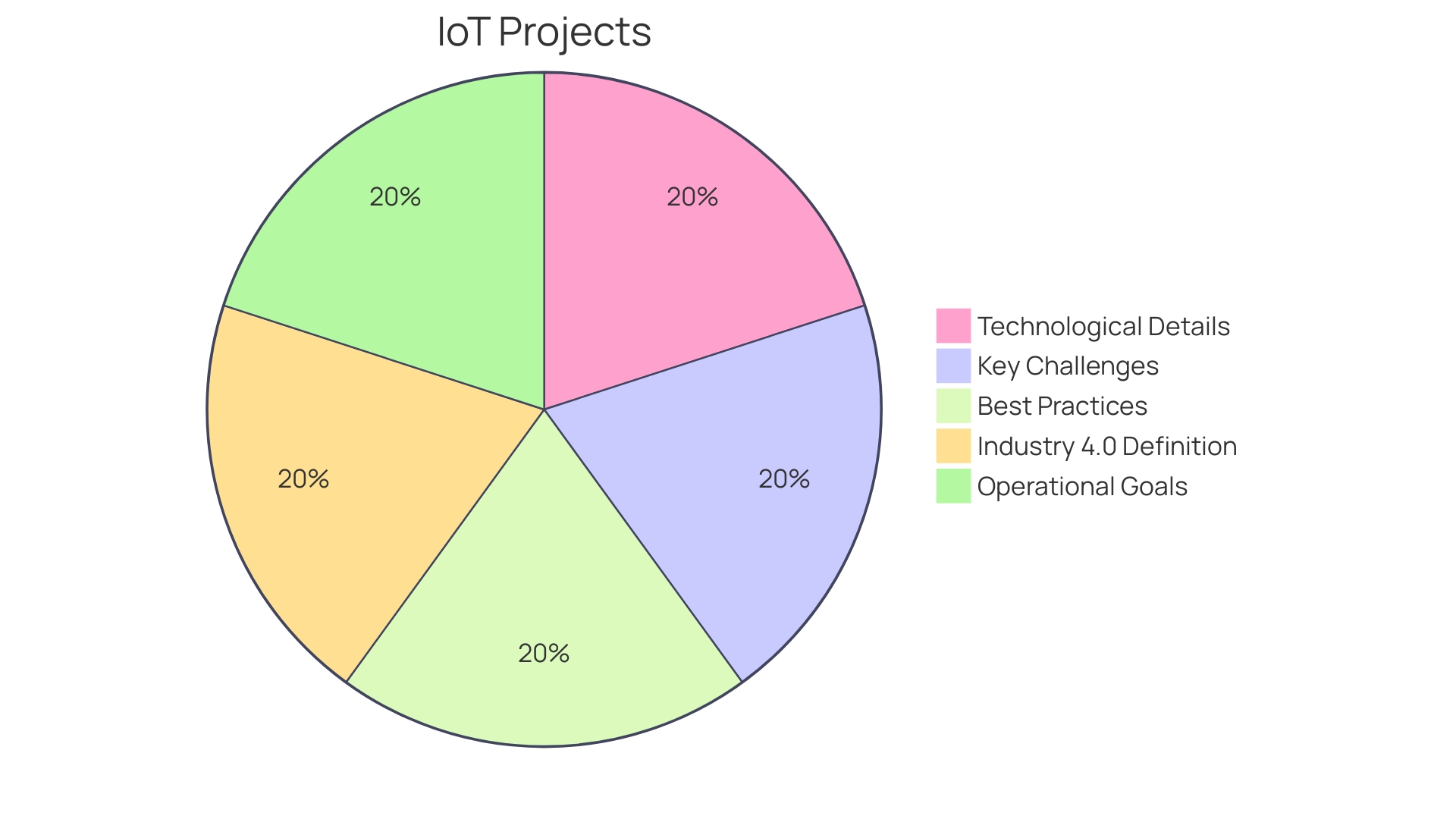
Technical Consulting
The intricacies of IoT implementation are numerous and can be daunting for businesses venturing into this innovative landscape. A meticulous approach is required to select the appropriate IoT devices, platforms, and connectivity options that align with specific business objectives. The architecture design is not just about technical compatibility; it must integrate seamlessly with existing systems, ensuring a cohesive and efficient network.
To illustrate, let's consider the concept of Industry 4.0, which epitomizes the integration of advanced technologies in manufacturing. It's an ecosystem where modern tech stack elements enable the harmonization of data sources, leading to improved operational efficiency and cost savings. This approach often involves leveraging cloud computing, a paradigm shift that offers vast scalability and flexibility by utilizing remote servers for storage and application services.
Incorporating IoT into business operations isn't solely about immediate gains; it's a strategic investment in scalability, security, and reliability. Industry leaders advocate that these principles should be ingrained from the onset of any IoT project. The dynamic nature of IoT demands a design philosophy that embraces flexibility and continuous innovation, allowing businesses to adapt and evolve with the ever-changing tech landscape.
Real-world examples underscore the critical role of IoT in enhancing business operations. For instance, in the realm of home automation, the global market is projected to burgeon, with expectations to hit $40 billion. Meanwhile, in logistics, manufacturers are increasingly relying on digital platforms and tracking devices to optimize their supply chains, a testament to IoT's transformative potential.
Yet, as the IoT space flourishes, security concerns escalate. The proliferation of connected devices broadens the attack surface for cyber threats, highlighting the importance of robust security measures in IoT architecture. It is imperative to identify potential vulnerabilities and implement strategies to mitigate risks, ensuring the integrity and trustworthiness of IoT ecosystems.
In sum, technical consulting for IoT is a sophisticated endeavor that encompasses not just the selection of the right technology but also the strategic planning and implementation that underpin long-term success and innovation. The goal is to create an interconnected system that not only supports current operations but is also primed for future growth and adaptation.
Security Consulting
IoT security consulting is a vital component in safeguarding the interconnected web of devices that form the Internet of Things. With the rapid expansion of IoT, where the number of connected devices has surged to 16 billion in 2023 from 12 billion just two years prior, the focus on security is more critical than ever. IoT devices often operate in environments that lack the predictable security of traditional IT infrastructures, such as data centers.
This exposes them to unique vulnerabilities, including the risk of physical tampering.
To combat these challenges, security measures must be both robust and adaptable. Measures include employing encryption for data at rest and implementing IoT-specific security techniques. For instance, securing the IoT ecosystem extends beyond just technological fixes—it is a comprehensive process that involves developing incident response plans to swiftly tackle potential breaches.
The importance of digital trust cannot be overstated, as it allows for a more secure and seamless integration of IoT into our digital society. Collaboration among various stakeholders, including standardization bodies like CEN and CENELEC, is pivotal in establishing a secure, trustworthy, and inclusive digital transition in Europe.
Moreover, with the advent of advanced security strategies such as AI-driven solutions and blockchain technology, there is a growing emphasis on the need to continually evolve cybersecurity measures. Acknowledging that there is no 'one size fits all' approach to security, it's vital for IoT device manufacturers and software designers to adopt a phased implementation strategy, tailoring security measures to the specific needs and restrictions of each project.
In summary, protecting the digital future of IoT requires a comprehensive, evolving approach to security that takes into account the physical and digital vulnerabilities unique to IoT devices. It involves not only state-of-the-art security measures but also collaboration, standardization, and the understanding that security is an ongoing process rather than a one-off task.
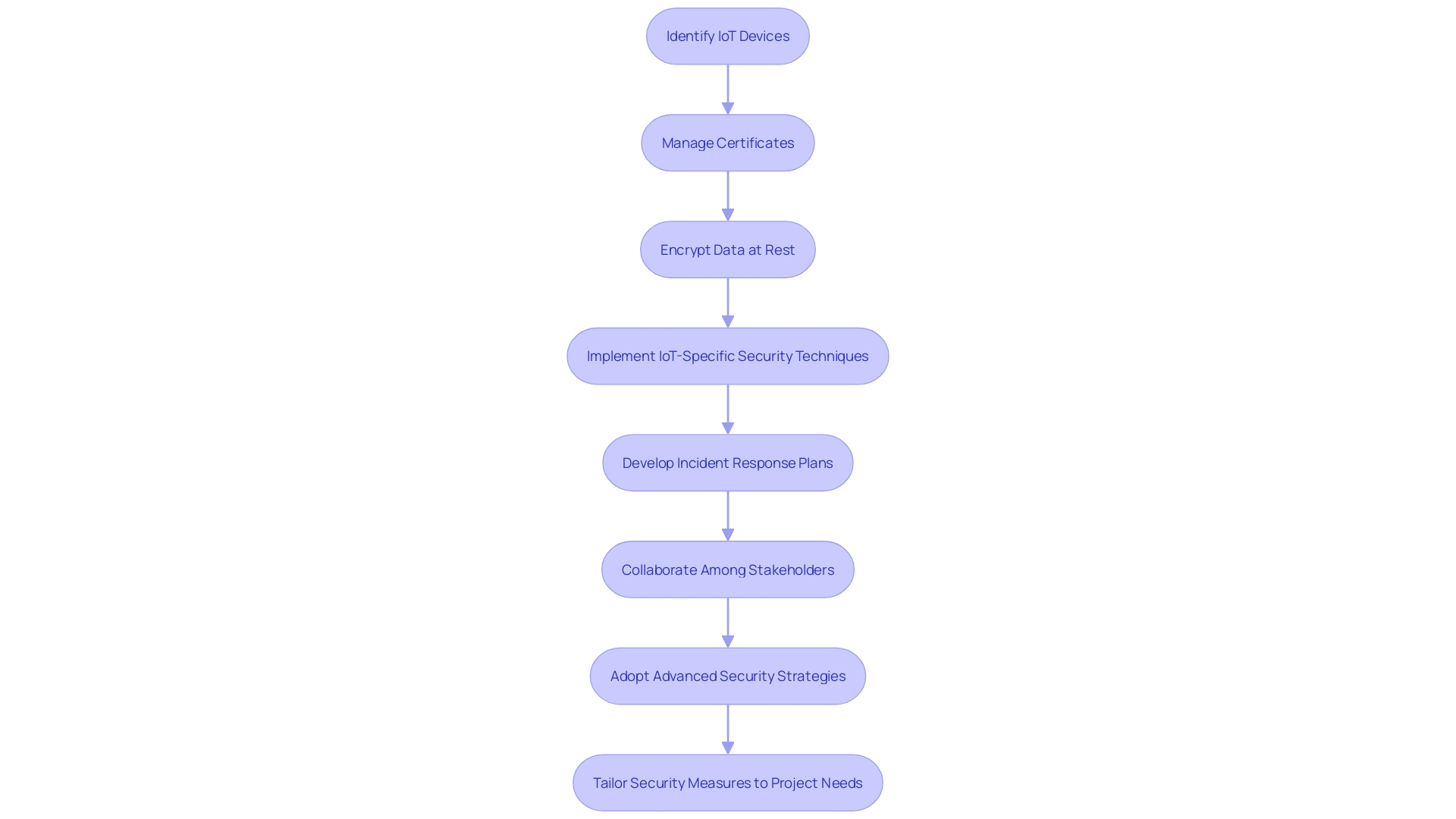
Analytics Consulting
Harnessing the power of IoT data analytics transcends traditional data management, bringing to light actionable insights for informed decision-making. The process encompasses the meticulous collection, secure storage, advanced analysis, and intuitive visualization of data retrieved from IoT devices. The complexity of IoT data, which arrives in both structured and unstructured formats, demands robust integration and transformation to yield precise and meaningful insights.
For instance, manufacturing giants like ICL have recognized the value of monitoring their industrial equipment through IoT, even in challenging environments with extreme temperatures and dust, where traditional monitoring might fail.
By embracing analytics consulting, companies can interpret the vast data generated by IoT devices, which Stefano Puntoni emphasizes should be "decision-driven" rather than merely "data-driven." This shift in perspective ensures that analytics serve the strategic goals of the organization, optimizing operations and driving innovation.
Moreover, as we step into an era where global data creation is expected to soar to over 180 zettabytes by 2025, the ability to manage and monetize this data efficiently becomes paramount. Technological advancements have facilitated this, enabling companies to handle data more effectively and at lower costs, as noted by McKinsey's insights on enhanced data-management efficiency and the advent of Generative AI.
The embedded systems community, as seen at the Embedded World event, is at the forefront of these developments, showcasing the latest in IoT and edge computing. This growing sector, backed by increased vendor participation and a return to pre-pandemic attendance levels, signals a robust interest and commitment to the future of IoT analytics.
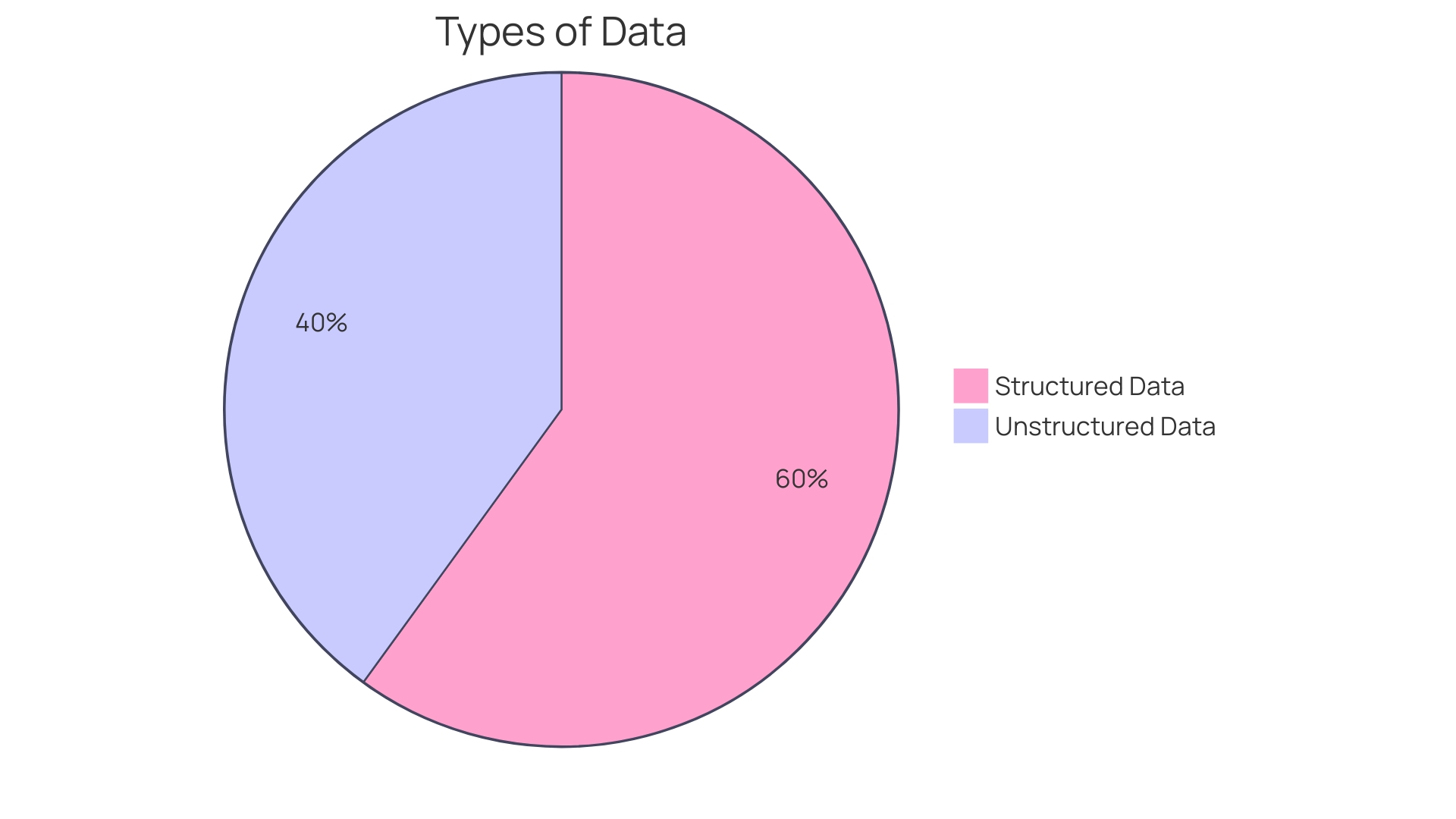
How to Choose the Right IoT Consulting Firm
Selecting a proficient IoT consulting firm is pivotal for the fruitful execution of your IoT ventures. When choosing a partner for IoT implementation, consider their proven capability in crafting tailored strategies aligned with specific business objectives. An adept consulting firm will offer a comprehensive understanding of the IoT landscape, evaluating your company's readiness for adoption and designing a solution that caters to your unique requirements.
A firm with a strong track record will have a portfolio of case studies showcasing their expertise in integrating modern Industry 4.0 technologies to enhance operational efficiency and achieve key performance indicators. They should demonstrate a clear data strategy, ensuring secure and efficient data flow throughout the IoT ecosystem, from device level to cloud analytics.
IoT costs can be significant and vary depending on the scale and complexity of the project. It's essential to choose a firm that can provide a clear monetization framework, helping you understand the economic potential of your IoT investment, and guide you through the technical requirements, including hardware, software, and connectivity solutions.
Additionally, with the rapid evolution of IoT technologies, it's important to partner with a firm that stays abreast of the latest trends and insights. An IoT consulting firm that is recognized by industry leaders and participates in knowledge sharing through earnings calls or industry reports can be a valuable asset, offering you cutting-edge solutions that drive customer satisfaction and revenue growth.
Ultimately, the right IoT consulting firm will act as a turnkey solution provider, encompassing a range of services from electronics development to UI/UX design, and will work collaboratively with you to transform interesting challenges into innovative, market-ready IoT solutions.
Expertise and Experience
When considering the vast potential of the Internet of Things (IoT), it's crucial to partner with a consulting firm that not only has extensive experience but also a track record of successful IoT implementations. Such firms should not only be well-versed with the technological aspects of IoT but should also understand the intricacies of the industry they are serving.
One prime example of IoT excellence in action is Bosch's development of the solid oxide fuel cell (SOFC) system. Bosch has utilized its profound engineering expertise to create an energy solution that is highly efficient and environmentally friendly. This innovation is made even more powerful by the inclusion of a digital twin, enabling comprehensive monitoring and optimization throughout the system's lifecycle.
Vodafone's transformation through cloud architecture is another testament to the power of strategic IoT implementation. By enabling customers to manage their services online and equipping engineers with advanced tools, Vodafone has significantly enhanced efficiency and customer satisfaction.
Similarly, TotalEnergies Digital Factory, a subsidiary of TotalEnergies, exemplifies the integration of IoT into operational strategies. With over 80 digital solutions developed across 25 countries, TotalEnergies Digital Factory harnesses APIs to modernize legacy systems, illustrating how IoT can drive a company's digital transformation.
Turning our focus to Coffee IT, we see a company that stands out due to its innovative integration of hardware and mobile apps. Their commitment to tackling technical challenges head-on has led to groundbreaking projects, such as the development of a Bluetooth Mesh network before it became a mainstream technology.
These examples underscore the importance of a consulting firm's ability to deliver IoT solutions that not only improve operational efficiency but also drive customer satisfaction and revenue. With the right partner, businesses can navigate the complexities of IoT and emerge as leaders in the ever-evolving digital landscape.
Industry Knowledge
For businesses seeking to harness the transformative power of the Internet of Things (It), partnering with an It consulting company that deeply understands the nuances of their industry can be the linchpin to success. The importance of industry-specific expertise cannot be overstated—such insight enables consultants to craft bespoke solutions that precisely target the unique challenges and opportunities a company faces.
Take, for example, Nets, a digital payment solutions company with over 50 years of service, who recognized the need for an IoT strategy that could distill complex technical data into user-friendly formats. By tackling the intricate task of translating dense tables and schemes into engaging, interactive content, Nets managed to empower their users to engage with the information more proactively.
In the rapidly evolving landscape of IoT, where home automation and industrial applications are becoming increasingly sophisticated, the stakes are high. The global market for smart home automation alone is projected to reach a staggering $40 billion. IoT consulting firms that are adept at navigating this domain can make a remarkable difference by implementing strategies that resonate with the client's specific market presence.
Moreover, the case studies from industrial digital transformation highlight the significance of tailored solutions. An upgraded Enterprise Resource Planning (ERP) system, for example, often initiates a digital transformation journey, showcasing the need for a step-by-step approach that aligns with the client's operational goals and industry standards.
In conclusion, the value delivered by an IoT consulting firm lies not just in their technical prowess but in their capacity to align technology with the client's industry-specific challenges. By doing so, they pave the way for enhanced operational efficiency, competitive differentiation, and innovative growth.

Range of Services
When selecting an IoT consulting firm, comprehensive capabilities are key. Look for a firm that not only guides you through strategic development but also ensures effective implementation and ongoing support. They should exhibit a robust understanding of the technological underpinnings of Industry 4.0, including the ability to integrate a wide array of data sources to optimize overall equipment effectiveness (OEE) and reduce costs.
A well-rounded firm will provide insights into both technology architecture, often with an on-premises focus aimed at efficiency, and operational goals that prioritize customer satisfaction and revenue growth.
Successful IoT consulting firms, like the founders of Coffee IT, often start with a clear grasp of the user's needs, developing strategies that address complex challenges involving hardware and software integration. Utilizing case studies, such as those in the Industrial IoT Case Study Report, can offer valuable lessons on key components and providers that were pivotal in the success of various IoT initiatives. These insights can be crucial in designing an IoT architecture tailored to your business goals and ensuring secure, interoperable solutions that address current IT capabilities while identifying areas for improvement.
Whether your focus is on streamlining manufacturing processes or enhancing smart-connected products for customers, the right IoT consulting partner should help you navigate the intricacies of IoT technology, from the initial definition of data strategies to the deployment of monetizable solutions. This partnership should ideally encompass a full spectrum of IoT consulting services, reflecting a deep understanding of the nuanced perspectives within Industry 4.0 and the Internet of Things.
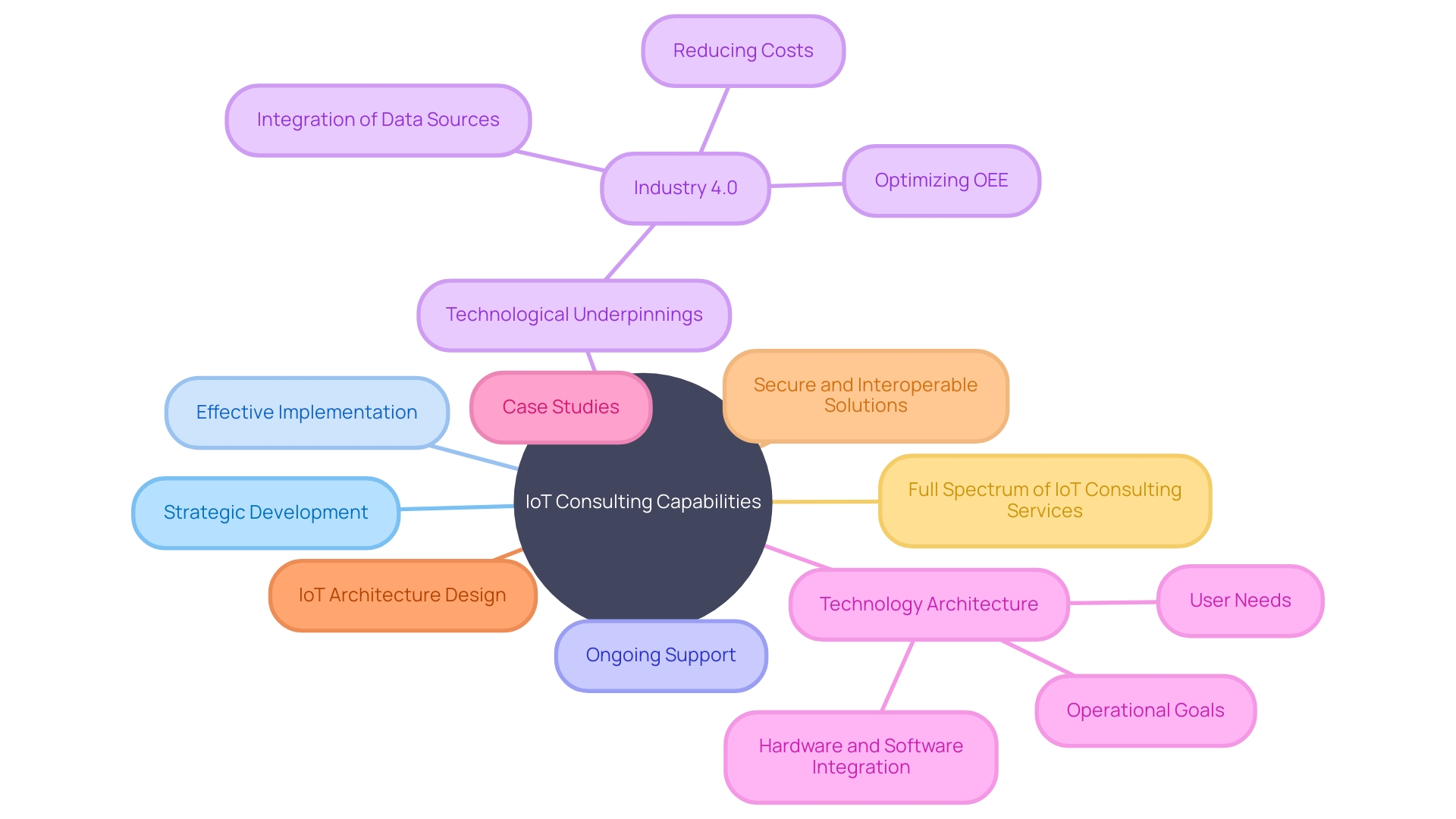
Client References and Testimonials
To discern the prowess and track record of an It consulting firm, it is judicious to request client references and testimonials. These personal accounts serve as a litmus test for the firm's reputation and the efficacy of their services. Testimonials reflect real-world applications and outcomes, mirroring the experience you may anticipate.
Analogous to the evolution of reputation dissemination, from word-of-mouth in close-knit circles to internet-speed global communication, client feedback provides immediate and relevant insights into the consulting firm's current capabilities. In the realm of digital engineering, companies like Virtusa Corporation embody this principle by showcasing a commitment to never propose solutions they cannot implement, thereby earning their reputation for delivering sustainable results.
In the context of financial improvement consulting, a KLAS report highlights the significance of outcomes like enhanced efficiency and performance. Such results underscore the importance of choosing a consulting partner with a proven record of advancing operational goals, such as those achieved through financial performance improvement engagements, which saw a 56% increase from the 2020 report.
Likewise, Small Business Consulting embodies this approach by offering expertise across various domains, from strategy to back-office tasks, with the aim to amplify efficiency and business growth. This is further evidenced by client testimonials, which often highlight the transformative effect of consultants' advice on their business trajectory.
Ultimately, client references are not just affirmations of past success but beacons that guide prospective clients towards making informed decisions. They echo the sentiment shared by experts like Colin Powell, who emphasizes the importance of current relevance in expert advice. The veracity of client testimonials lies in their reflection of the present, offering a pragmatic glimpse into what you can expect from your IoT consulting partnership.
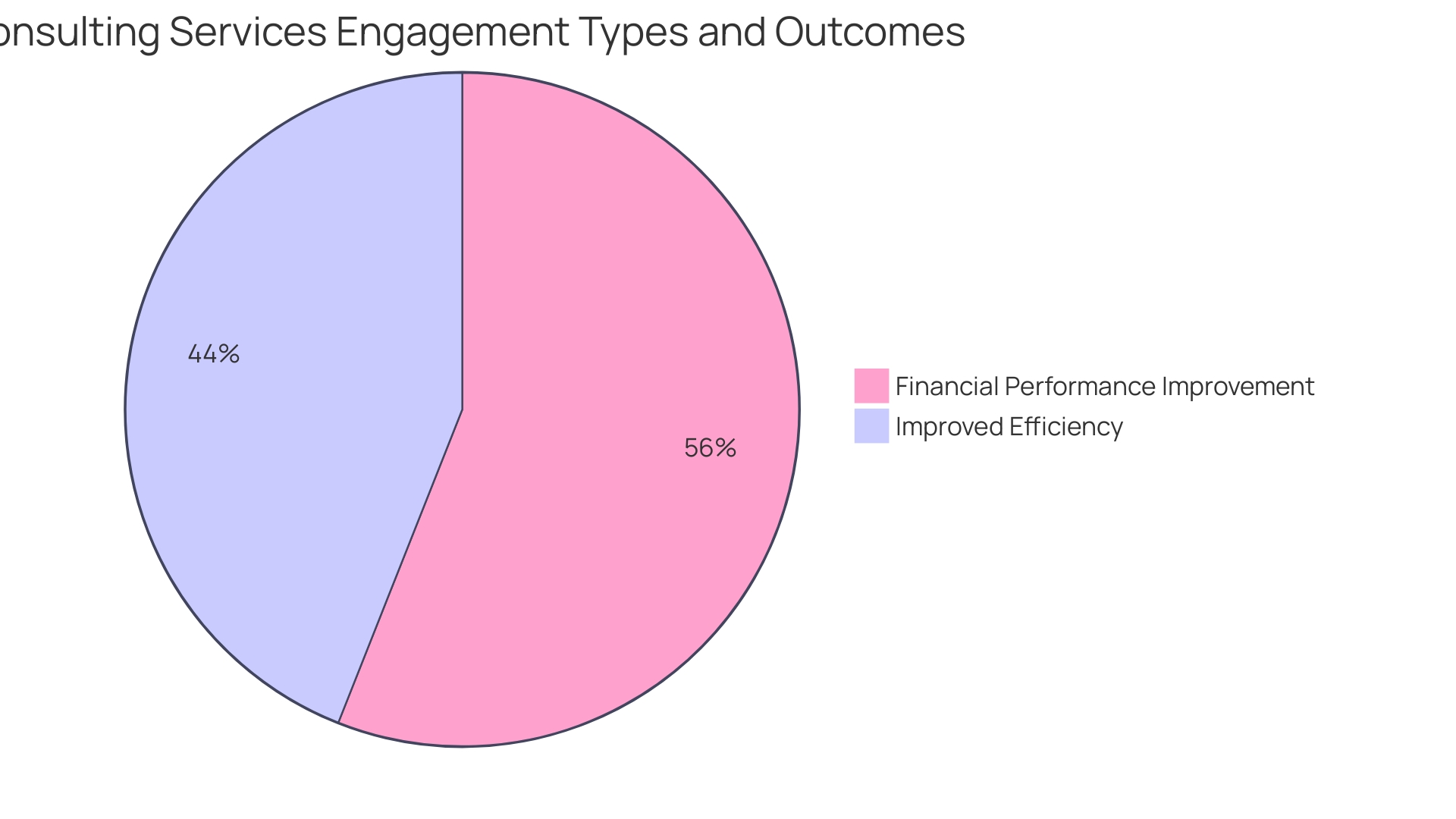
Case Studies: Successful IoT Consulting Projects
The landscape of the Internet of Things (IoT) is dotted with innovative projects that have transformed businesses and industries. For instance, in the realm of Industry 4.0, IoT consulting has paved the way for manufacturers to harness modern tech stacks and supporting technologies. This enables the integration of diverse data sources, leading to improved overall equipment effectiveness (OEE), cost reductions, and better performance across various key performance indicators (KPIs).
A notable example is the deployment of IoT in manufacturing setups, which often necessitates a blend of on-premises technology architectures, including programmable logic controllers (PLCs) and tethered connectivity.
On the urban infrastructure front, IoT initiatives have been instrumental in enhancing the safety and reliability of city roadways and highways. By addressing issues such as potholes and cracks through smart-connected solutions, cities have been able to reduce vehicle damage and lower the risk of accidents, all while minimizing public inconvenience during extensive road repairs.
Diving into a case study, Coffee IT exemplifies the value of IoT consulting. Founded nine years ago, this company has evolved by taking on challenging projects that combine hardware and mobile apps. Coffee It's journey began with a VoIP app for ClearVox and later, an innovative app for in-lite to control garden lighting, which involved creating a Bluetooth Mesh network before the technology became mainstream.
Turning to the residential sector, the smart home automation market is a testament to It's growing influence, with forecasts predicting its value to reach $40 billion by 2020. This burgeoning sector underscores the momentum of IoT in enhancing how people live and interact with their environment.
These examples underscore the diverse applications of IoT technologies and the significant role of IoT consulting companies in bridging the gap between innovative concepts and real-world applications. From improving operational efficiency and cost savings for manufacturers to enhancing customer satisfaction and user interaction in smart homes, IoT consultants are at the forefront of driving technological change and innovation.
Smart Manufacturing
The Siemens Digital Enterprise suite exemplifies the transformational power of IoT technologies in manufacturing. At the Electronics Factory Erlangen, digitalization has revolutionized operations, introducing artificial intelligence, digital twins, and IT/OT convergence. This strategic adoption has not only boosted productivity and quality but also introduced sustainability in manufacturing processes.
It's a testament to how IoT solutions can minimize downtime and enhance efficiency, leading to substantial cost savings.
In a similar vein, the integration of IoT with advanced technologies like AI and robotics is redefining the manufacturing sector. The Keynotion Smart Manufacturing World Summit underscores the necessity of adopting such technologies to improve precision and spur product innovation. Additionally, big data analytics has become critical in comprehending market trends and consumer demands, enabling data-driven decision-making.
Leadership plays a crucial role in this technological advance, where fostering a culture of innovation and ensuring a skilled workforce is as essential as understanding the technicalities. The journey towards a smarter manufacturing process involves learning from industry peers, as seen in the 22 industrial digital transformation case studies. These cases highlight the benefits of digitalization, from ERP upgrades to predictive maintenance, which are essential steps for any manufacturing entity aiming to optimize operations and reduce overheads.
The automotive industry's waste management problem illustrates the efficiency that can be achieved through IoT. Optimizing waste collection by employing IoT devices to monitor refuse bins can prevent unnecessary trips, saving both time and resources. This is just one of the many applications where IoT consulting firms can assist manufacturers in realizing a more efficient, productive, and innovative production environment.
Connected Healthcare
Harnessing the power of IoT, healthcare providers have achieved significant advancements in patient monitoring and remote healthcare services. For instance, innovations like Everyplace Labs' fully automated kiosk system have streamlined diagnostic testing, reducing the strain on hospital and lab facilities. This kiosk performs urine and respiratory tests and delivers results with no human intervention, circumventing the bottlenecks in emergency departments and enhancing patient care.
In regions where traditional telehealth faces challenges due to lack of resources, solutions like Evexia Telehealth's Evexia Gateway have emerged. This device simplifies remote patient monitoring for communities with limited access to technology, requiring no more than a wall plug to connect to standard medical equipment. By addressing digital illiteracy and reducing costs, the Evexia Gateway represents a leap toward accessible healthcare.
The IoT has not only simplified patient care but also enriched it with real-time data analysis. Devices interconnected through IoT can communicate vital patient data, enabling healthcare providers to make informed, timely decisions. This digital transformation, which includes the integration of AI and ML into healthcare, has paved the way for improved operational efficiency and personalized patient care.
These technological integrations are critical in addressing the healthcare needs of an aging population and the challenges faced by underfunded areas. With an estimated 40 million people needing palliative care annually, the majority in low-resource settings, the role of IoT in healthcare becomes even more vital. It's not just about monitoring; it's about creating a seamless healthcare ecosystem that enhances patient outcomes and reduces costs while addressing the global demands of chronic disease management and ageing populations.
Smart Cities
Harnessing the transformative power of the Internet of Things (IoT), an IoT consulting firm partnered with a city government to pioneer smart city solutions. The collaboration aimed to revitalize urban infrastructure, focusing on three pivotal areas: transportation, waste management, and energy systems. Through this initiative, the city embarked on a journey towards sustainability and enhanced efficiency.
The project was emblematic of IoT's capability to interlink everyday objects and systems, enabling them to communicate, analyze, and share data seamlessly. In the realm of transportation, the introduction of IoT solutions streamlined traffic flow and reduced congestion, leading to improved air quality and commuter satisfaction. Waste management systems, equipped with sensors, optimized collection routes and schedules, contributing to a cleaner and more sanitary urban landscape.
Energy optimization efforts, underpinned by IoT, facilitated the monitoring and smart allocation of resources, reducing wastage and fostering a greener city environment.
These endeavors echo the success story of Cascais, Portugal, where a unified digital command center, powered by Deloitte's City Synergy, integrated operations across numerous municipal domains. Similarly, the consulting firm's expertise bolstered the city's pursuit of becoming a smart, connected community, with a focus on scalability and the potential to replicate these solutions in other urban settings.
Steven Cornwell, Global Director of ERA-co, emphasizes the importance of data-driven insights in shaping smart cities. The collaborative process, involving both private enterprises and government entities, leverages data to profoundly impact society and the physical world. This project stands as a testament to the potential of IoT in fostering innovation, driving efficiencies, and improving the quality of life for city dwellers.
Common Challenges in IoT Consulting and How to Overcome Them
Navigating the complexities of IoT integration poses several challenges that businesses must overcome to fully capitalize on its potential. A paramount obstacle is the daunting task of managing the vast amount of data generated by IoT devices, which come in a variety of formats and from multiple sources. This data deluge can quickly exceed storage and processing capabilities, especially since it encompasses both structured and unstructured data types.
To effectively leverage IoT insights, companies must employ sophisticated data integration and transformation processes. Without a strategic approach to handle this data diversity efficiently, businesses risk succumbing to information overload, which can stymie their ability to extract actionable insights.
To illustrate the practical application and potential hurdles of IoT, let's consider the realm of industrial digital transformation. A comprehensive analysis of 22 industrial case studies reveals a common trajectory toward digitalization, including initiatives in data architecture and predictive maintenance. These studies are instructive, highlighting the real-world benefits and challenges of IoT projects.
They provide a framework for understanding how organizations, particularly in manufacturing, navigate digital transformation and scale their IoT initiatives.
One such example is the transition to an upgraded ERP system, often cited as the first step in a company's digital transformation journey. This upgrade is crucial for integrating various data sources and achieving higher operational efficiency. However, it also underscores the diversity of perspectives on Industry 4.0 and IIoT technology.
Some manufacturers prioritize a technology architecture with a significant on-premises footprint, emphasizing PLCs, tethered connectivity, and hardware retrofits. Others focus on operational goals, aiming for efficiency and cost savings.
In the pursuit of successful IoT integration, it's imperative to focus on the requirements of end systems and use cases. Data modeling should be driven by the minimal information needed to fulfill the application's needs rather than an exhaustive hierarchical mapping. A targeted approach to data modeling can significantly reduce complexity and streamline the integration process.
The global market for IoT, including sectors like smart home automation, is burgeoning and is expected to reach significant financial milestones. However, despite the rapid adoption of IoT technologies, businesses must not overlook the challenges that accompany this digital evolution. By learning from the experiences of others and emphasizing strategic data management, companies can mitigate the risks and harness the full potential of IoT.
Security and Privacy Concerns
The Internet of Things (IoT) has swept across our lives, connecting everything from our homes to our cars, and making our cities smarter. With this seamless connectivity, we're able to enjoy unparalleled comfort and efficiency. Imagine waking up to a home that automatically tunes itself to your preferences, driving to work in a car synced to your daily schedule, and navigating a city optimized for convenience.
However, the vast network of IoT devices also opens the door to significant security risks, including unauthorized access to personal data and system hacking.
Addressing the security and privacy concerns of IoT is imperative to maintaining this ecosystem. Businesses must proactively establish robust security measures to guard against the vulnerabilities inherent in a diversified technical landscape. Encryption protocols play a critical role in securing device operation and user privacy, while authentication ensures that only authorized entities gain access to the system.
To stay ahead of cyber threats, it's essential to stay abreast of the constantly evolving landscape of IoT security. This includes understanding the challenges like the lack of standardization across devices, the limited processing power of IoT devices to deploy advanced security measures, and the inherent risks posed by internet exposure.
The surge in IoT devices—from 12 billion in 2021 to 16 billion in 2023—demonstrates a clear trend toward a more connected world, which brings with it the necessity of advanced security solutions. Cybersecurity legislation is expanding rapidly, with many countries moving from voluntary guidelines to mandatory security requirements for IoT devices. This includes practices such as avoiding default passwords and ensuring regular firmware updates, as highlighted in the 'Regulatory landscape for the Internet of Things' report by Transforma Insights.
To fortify the IoT landscape, a multifaceted approach is essential, ranging from AI-driven solutions and blockchain technologies to comprehensive regulatory measures. As such, it is crucial for technology professionals and cybersecurity experts to play an active role in shaping a secure IoT future, ensuring a balance between convenience and security.
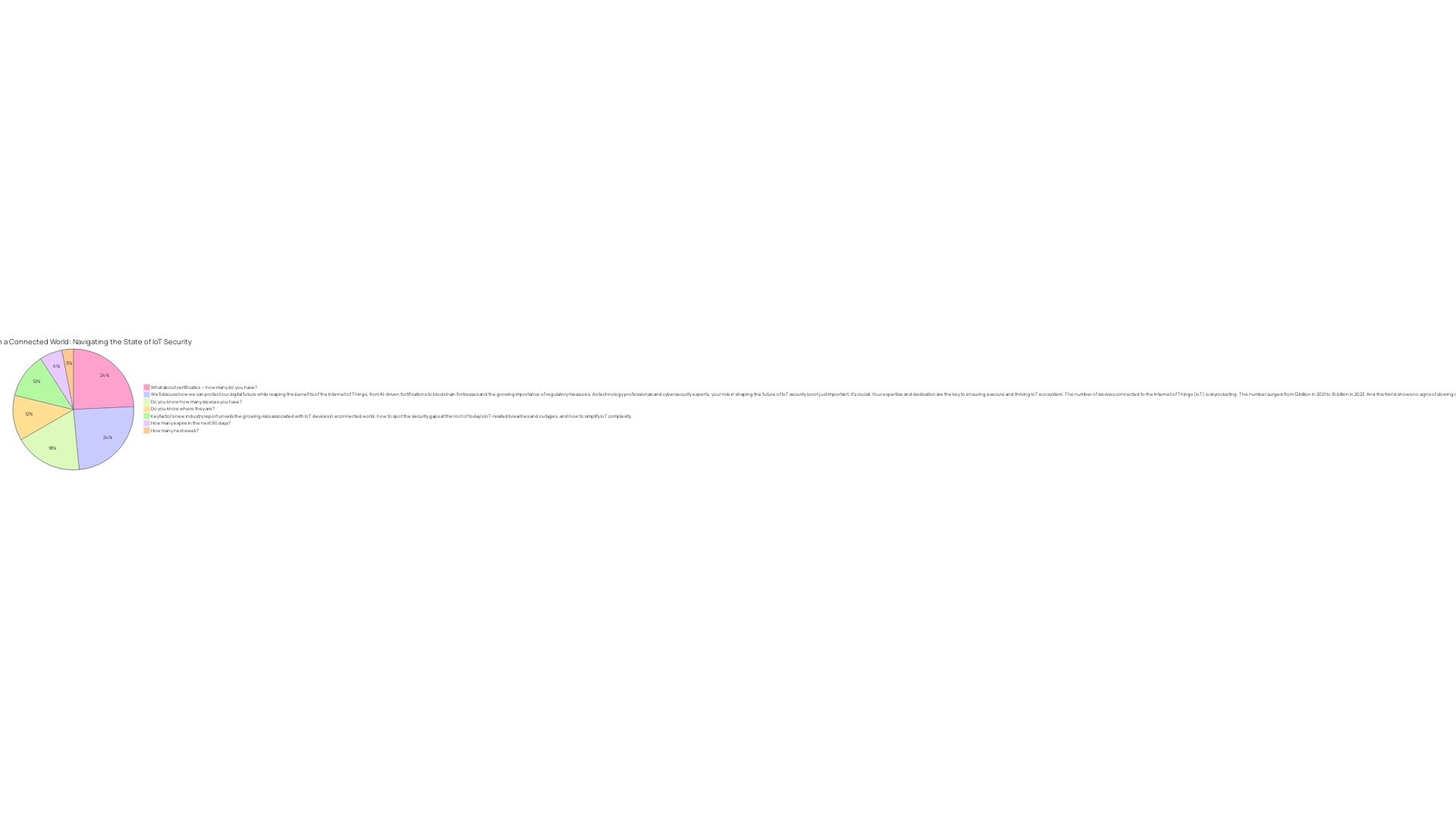
Scalability and Interoperability
Interoperability and scalability in the IoT realm are critical for the seamless integration of diverse technologies and for supporting the expansion of IoT ecosystems. Interoperability, which enables different devices, systems, and platforms to cohesively work together, is a prerequisite for creating a unified IoT environment. This harmonious interplay is crucial for devices to exchange data effectively, carry out interconnected tasks, and deliver a smooth user experience across various technologies and applications.
To enhance interoperability, it is essential to adopt standardized protocols that facilitate this cross-platform communication, ensuring that devices from different manufacturers and with different protocols can interface efficiently.
Scalability, on the other hand, ensures that as the IoT network grows—which is inevitable given the global market for smart home automation is projected to reach $40 billion—new devices can be added without disrupting existing operations. A scalable IoT infrastructure, supported by modular architectures, allows for the accommodation of an increasing number of connected devices. This adaptability is vital, especially considering the rapid technological advancements and the rising demand for data that fosters transparency and better control over processes, as observed in industries like logistics.
Moreover, the security of these interconnected devices forms the foundation of trust for any device in the field. As the number of connected devices continues to soar, so does the threat of cyber attacks, making it imperative to prioritize robust security measures in the design of IoT systems. Achieving interoperability and scalability while ensuring security is a complex challenge, but it's one that must be addressed to harness the full potential of IoT technologies and to drive sustainable solutions for our pressing needs.
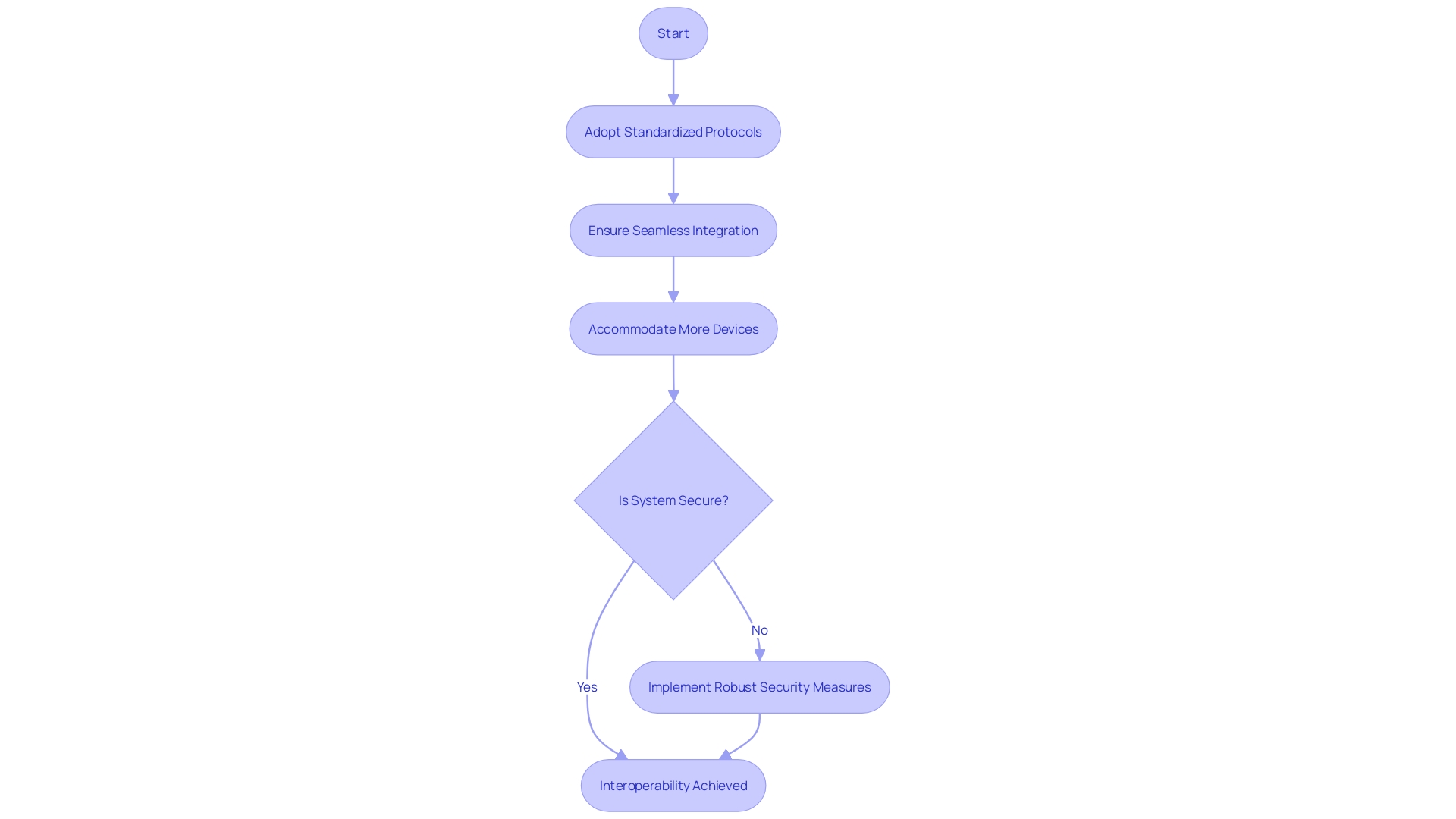
Data Management and Analytics
As the Internet of Things (IoT) permeates various sectors, businesses are inundated with data from an array of connected devices. This deluge of IoT data, both structured and unstructured, often leads to storage and processing challenges. Sophisticated data integration and transformation processes are necessary to manage this data effectively and extract actionable insights.
The advent of cloud computing has been a game-changer, providing scalable and efficient solutions for data management. It eliminates the need for substantial upfront investments in IT infrastructure, which is particularly beneficial for sectors like healthcare, where cost savings are crucial. With cloud services, businesses can rent necessary resources, such as applications, storage, and processing power, adapting swiftly to market changes and driving growth.
Furthermore, the digital landscape is evolving with trends like data democratization, where data fabrics and mesh architectures play a pivotal role. By integrating data from disparate sources into a cohesive view, these architectures ensure that data is accessible to all enterprise members, irrespective of their technical proficiency.
The importance of robust data management is underscored by the fact that IoT devices generate vast amounts of data that can overwhelm traditional storage and processing capabilities. Companies must strategically address the challenge of managing this data to prevent information overload and facilitate the derivation of meaningful insights.
As Industry 4.0 reshapes manufacturing and other industries, the focus shifts to integrating various data sources and utilizing technologies that help achieve higher operational efficiency and reduce costs. The dual perspective of Industry 4.0 acknowledges the need for both on-premises technology architecture, including PLCs and hardware retrofits, and the pursuit of operational goals centered around customer satisfaction and revenue.
The growing adoption of cloud computing, fueled by the need for real-time analytics and the use of advanced technologies like IoT, AI, and Machine Learning, is pivotal. It empowers organizations to operate efficiently and adapt rapidly to changing market environments, as highlighted by the World Economic Forum's recognition of cloud computing as a critical enabler of the fourth industrial revolution.

Future Trends in IoT Consulting
IoT consulting is at the forefront of technological innovation, shaping the way industries operate and evolve. As organizations increasingly adopt IoT solutions, they are turning to consulting firms for guidance in navigating this complex landscape. A pivotal trend in this domain is the emergence of Industry 4.0, which signifies a shift towards data integration and smart manufacturing.
This advancement is driven by modern tech stacks and supporting technologies that enhance operational efficiency, reduce costs, and improve key performance indicators. In this transformative age, manufacturers are adopting different views of Industry 4.0 and IIoT, with some focusing on operational efficiency and cost savings through on-premises technology architectures, and others prioritizing customer satisfaction and revenue generation.
As reported in a recent overview, the surge in IoT adoption has seen connected devices grow from 12 billion in 2021 to an astonishing 16 billion in 2023. This rapid expansion is a testament to the transformative power of IoT, influencing everything from our morning routines to urban navigation. However, this convenience necessitates a parallel emphasis on robust security measures to mitigate potential risks like unauthorized access and system hacking.
In the realm of IoT consulting, open-source software has become a cornerstone, providing foundational capabilities and facilitating the development of commercially viable products. It conserves industry resources and fosters innovation by offering a shared starting point. Despite its critical role, there is a concerning trend of reduced support for open-source initiatives by large technology firms, risking the progress and collaborative nature that has been pivotal to the sector's growth.
The dynamic nature of the industry is further reflected in the changing themes of earnings calls and CEO discussions. Insights from Q2 and Q3 of 2023 reveal a shift in sentiment and the emergence of new trends, underscoring the need for businesses to remain agile and responsive to the evolving economic environment.
In this context, IoT consulting firms are not only tech advisors but also trend interpreters, helping businesses discern and leverage these shifts for sustained growth and innovation. By examining case studies and technical aspects of IoT projects, consulting firms offer a roadmap for successful implementation and integration, ensuring that companies can confidently step into a future where the Internet of Things is an integral part of industry progression.
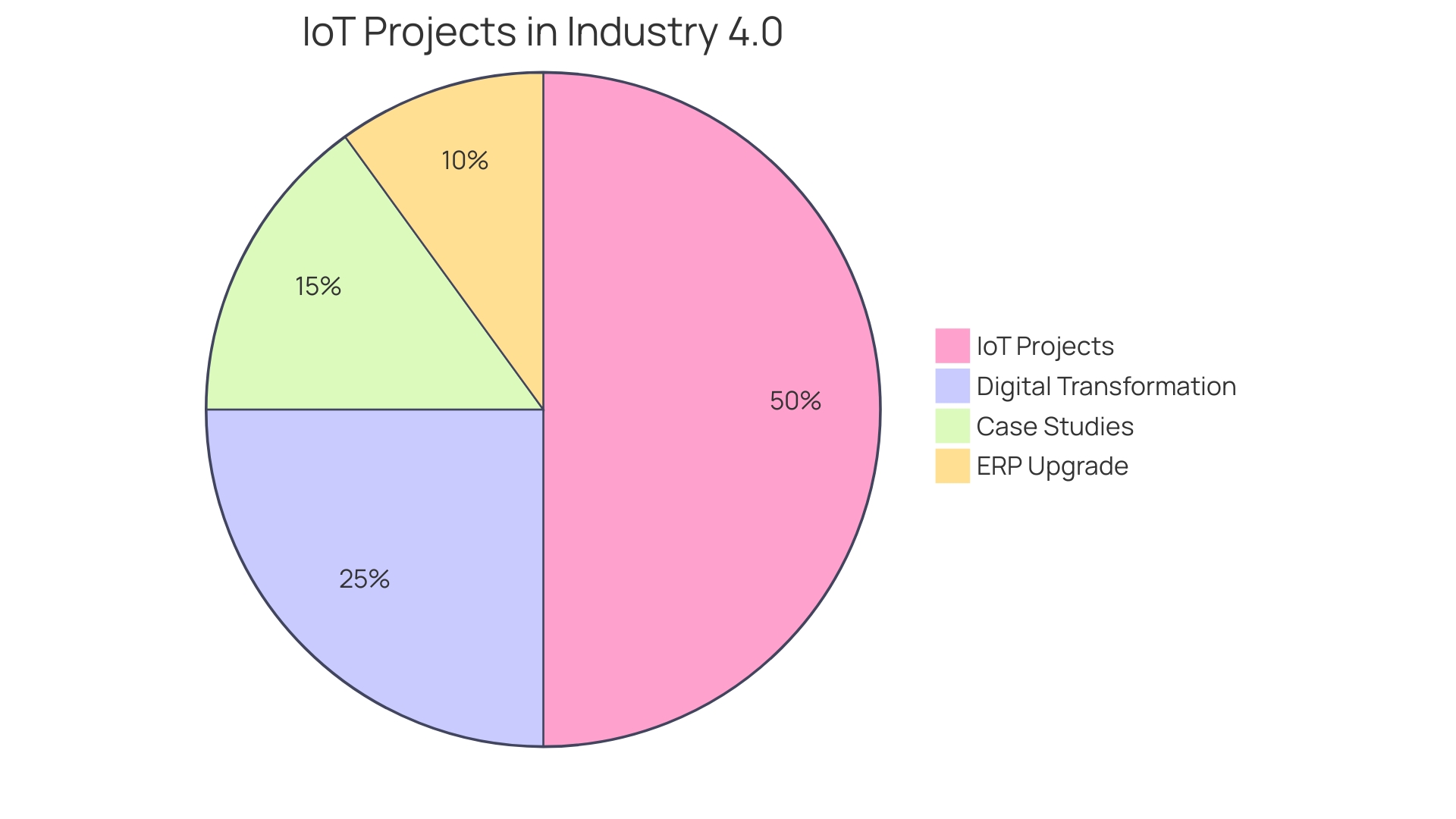
Edge Computing
The concept of edge computing is swiftly becoming a cornerstone in the realm of IoT consulting, with its ability to process and analyze data where it's generated—the edge of the network. This decentralized approach not only allows for real-time data analytics but also significantly diminishes latency, a crucial advantage in today's fast-paced digital environment.
For instance, Bosch's development of its solid oxide fuel cell (SOFC) system exemplifies the power of edge computing. The SOFC, a local energy converter with an impressive 60% electrical efficiency, benefits from a digital twin that enables monitoring and optimization of the system's health and performance throughout its lifecycle. This type of edge computing application underscores the potential for enhanced efficiency and sustainability in energy production.
Similarly, Grupo PINSA's Pesca Azteca, a titan in Latin America's fishing industry, has leveraged edge computing to uphold its commitment to sustainable fishing practices. By integrating advanced technologies into their operations, they have achieved significant advancements in efficiency and quality, setting a new standard in the seafood supply chain.
These practical applications of edge computing are echoed in the broader tech community, as evidenced by the growth of Embedded World, an essential fair for embedded systems. Here, the surge in attendance and participating vendors indicates a heightened interest and commitment to exploring edge computing's capabilities.
Overall, the shift toward distributed computing architectures, as highlighted in the historical journey from centralized to distributed systems and back, sets the stage for edge computing to revolutionize how businesses operate and thrive in a connected world. The ability to process data at the source is not only a technical evolution but also a strategic imperative for companies looking to gain a competitive edge through real-time insights and responsive actions.
Artificial Intelligence and Machine Learning
The integration of AI and ML with IoT is revolutionizing predictive analytics, anomaly detection, and autonomous decision making in various industries. One notable application is in the utility sector, where companies like Duke Energy are leveraging AI to enhance the inspection and maintenance of utility poles. This is a significant shift from the traditional manual inspections, offering a more efficient and safer approach to managing critical infrastructure, reducing the likelihood of power outages and equipment failure.
Incorporating AI into existing systems may seem daunting, but it's a feasible endeavor. Real-world applications demonstrate that businesses can integrate AI into their processes without overhauling their established systems. This approach not only maintains the stability of current workflows but also taps into the benefits of AI for more intelligent decision-making.
Carrier, a company known for its climate control solutions, is another example where AI is used to move beyond threshold-based systems to a more predictive model. By anticipating equipment issues before they occur, Carrier enhances reliability and reduces downtime, which is increasingly vital in our climate-sensitive world.
The significant impact of AI and ML in IoT is also reflected in the broader economic environment, as evidenced by the discussions in earnings calls. CEOs are increasingly focusing on these technologies, indicating their importance in driving business growth and staying competitive. The stats show that AI solutions are not only saving time and costs but also spurring innovation for new products and services.
As we continue to witness the growth of AI and ML integration with IoT, the potential for transformative change across various sectors is immense, promising a future where smart decision-making is the norm.
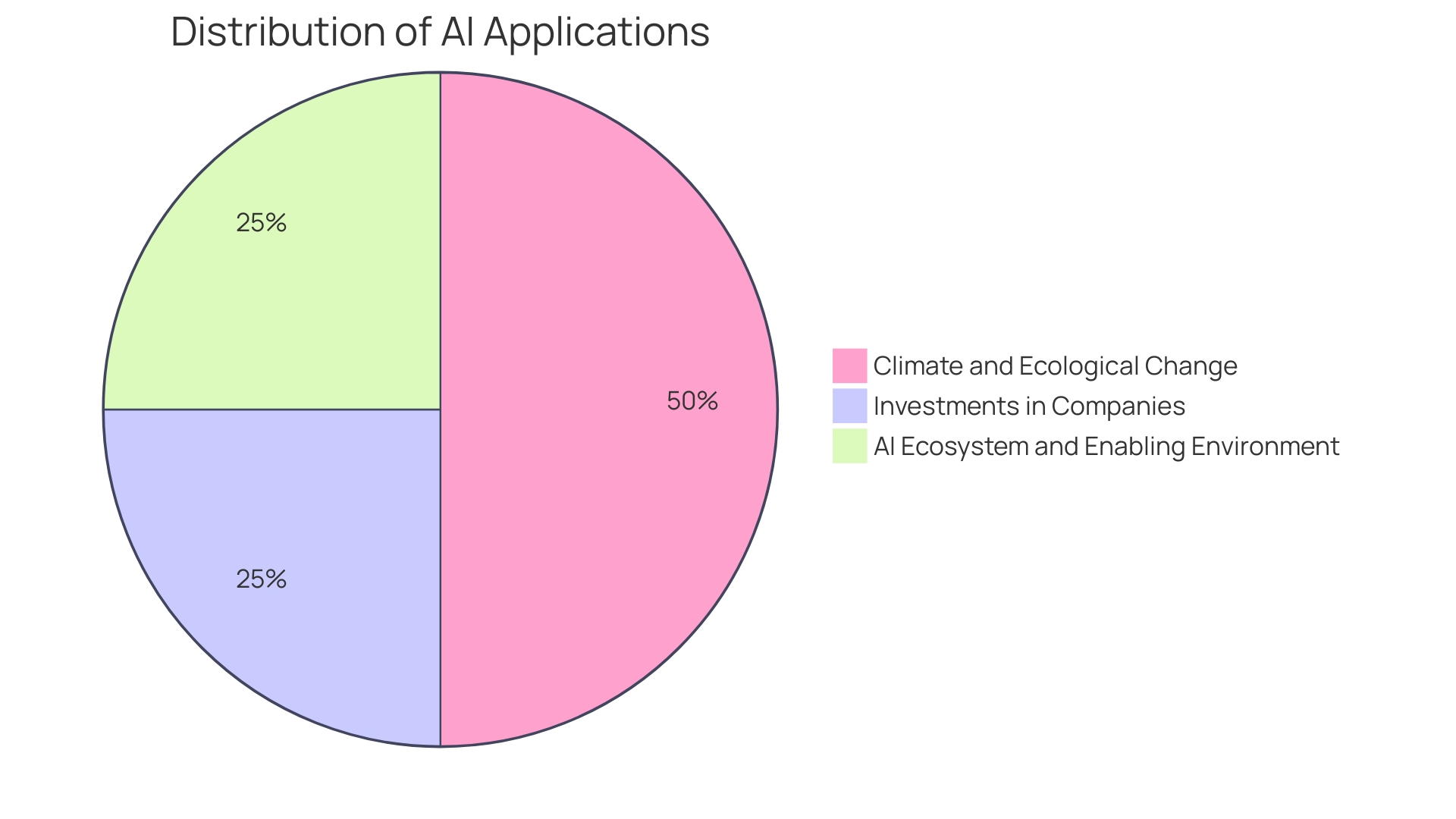
Blockchain Technology
Blockchain is currently making waves in the realm of the Internet of Things (IoT) by providing a robust solution to the security vulnerabilities that are inherent as the number of connected devices skyrockets. The integration of blockchain into IoT systems is not just an innovation; it's set to be a transformative approach that could redefine the way IoT consulting services operate.
Through a decentralized and tamper-resistant ledger, blockchain technology offers an unprecedented level of security, privacy, and trust in IoT transactions and data sharing. As pointed out in a systematic literature review, the incorporation of blockchain is being acknowledged as a game-changer in the interconnected world of Industry 4.0 and IoT. With key features such as Merkle trees and sharding, blockchain databases are designed to manage transactions efficiently while ensuring long-term and short-term data integrity.
Moreover, the Hangzhou Data Exchange is a testament to the practical applications of blockchain in creating secure data trading platforms. This initiative, backed by prominent collaborations, is leveraging distributed ledger technology to build a transparent and interference-proof data economy. Such pioneering efforts are demonstrating the real-world effectiveness of blockchain in managing the intricate web of IoT data exchanges.
In the context of IoT security, quotes from industry experts echo the urgency to secure IoT devices against cyber threats. Blockchain emerges as a potential solution to create more secure IoT systems, providing a decentralized infrastructure that eliminates the need for centralized authorization, thereby speeding up data transaction coordination.
The IoT landscape is evolving rapidly, with an increasing prevalence of connected devices becoming a significant tech trend in 2023. This evolution brings forth challenges, particularly in logistics where manufacturers are adopting digital platforms and tracking devices to manage supply chains more efficiently. However, with the rise of connected devices comes the heightened risk of cyber attacks, emphasizing the critical role blockchain plays in ensuring the secure and trustworthy deployment of IoT systems.
As we delve into the realm of IoT, it's clear that blockchain is not just a technology to watch but one that is actively shaping a more secure and reliable future for IoT implementations worldwide.
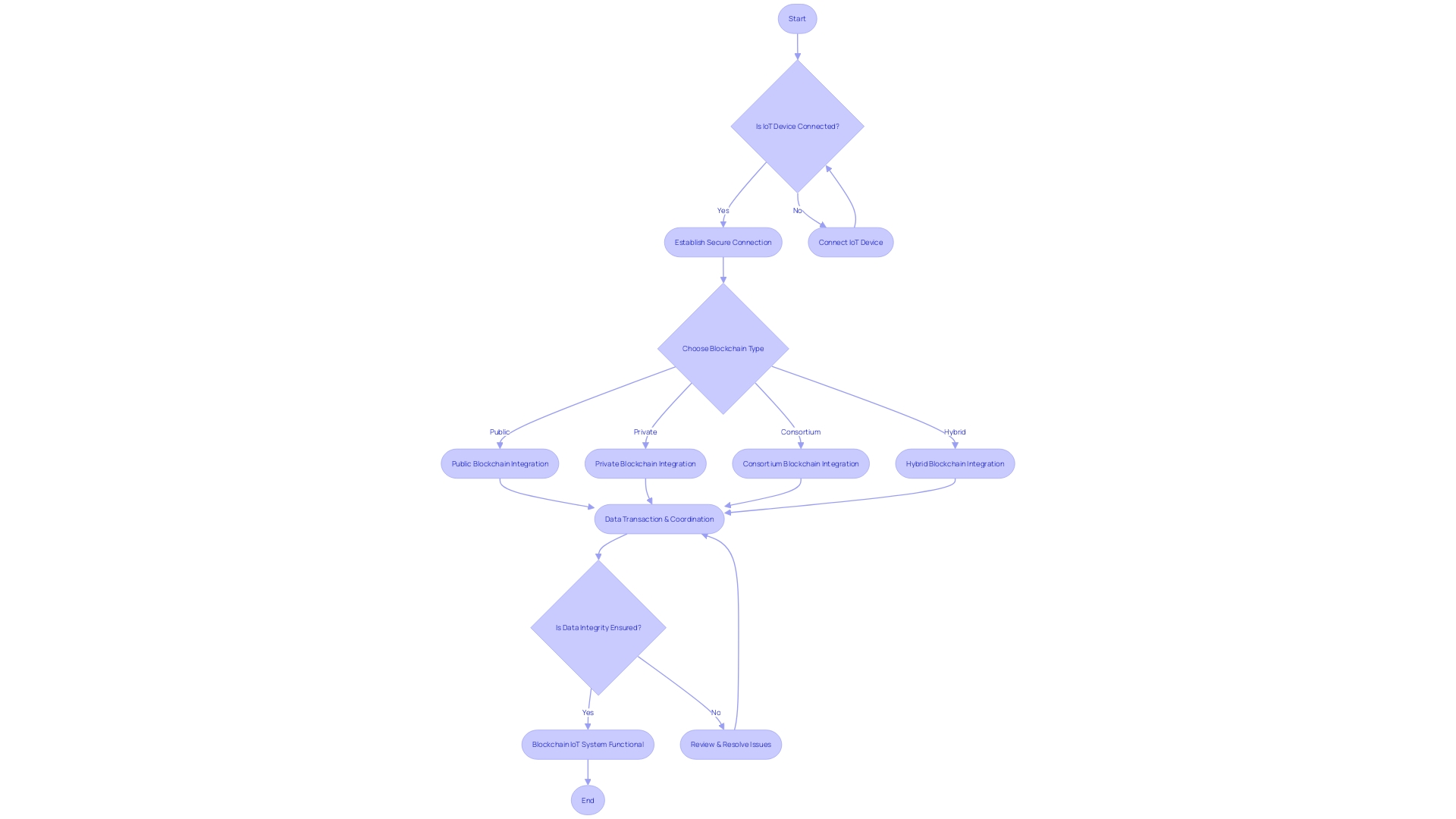
Additional Resources
Understanding the intricacies of IoT and its application in Industry 4.0 is crucial for any business aiming to enhance operational efficiency and drive innovation. Industry 4.0 denotes the transformative integration of various data sources, technology elements, and supporting technologies that empower manufacturers to achieve enhanced overall equipment effectiveness (OEE), reduce costs, and improve key performance indicators (KPIs) within production environments. The two predominant perspectives on Industry 4.0 focus on either technology architecture with substantial on-site components or operational goals centered on customer satisfaction and revenue generation.
As we delve into Industrial IoT (IIoT) projects, it's notable that initiatives often begin with an in-depth business overview, detailing company information and the project's mission. Our Industrial IoT Case Study Report sheds light on critical technical aspects, such as essential components and technology providers, which are vital to understanding how IoT solutions are executed in real-world scenarios.
Staying updated with the latest trends is imperative, and insights from recent earnings calls suggest that certain keywords and themes have gained or lost prominence over time. For instance, analyzing changes in sentiment in Q2 2024 earnings calls can offer a glimpse into the evolving economic landscape and its impact on business strategies.
Best practices for team education, as highlighted in recent reports, include tailored training sessions, equipping teams with comprehensive resources like eBooks and white papers, and conducting hands-on, cross-functional workshops. These practices are essential for effectively commercializing IoT software and ensuring that sales teams are well-versed in engaging customers with new technologies.
To further comprehend the scope and potential of IoT in healthcare, it's important to recognize the Internet of Medical Things as a burgeoning segment. This domain encompasses remote patient monitoring, smart medical devices, and predictive analytics, with the market's performance measured by revenue and growth in IoT-specific components such as hardware, platforms, connectivity, and services.
In conclusion, by studying these multifaceted aspects of IoT implementation, from technical details and operational goals to market insights and educational strategies, businesses can forge a path toward successful IoT integration and leverage the full potential of Industry 4.0.
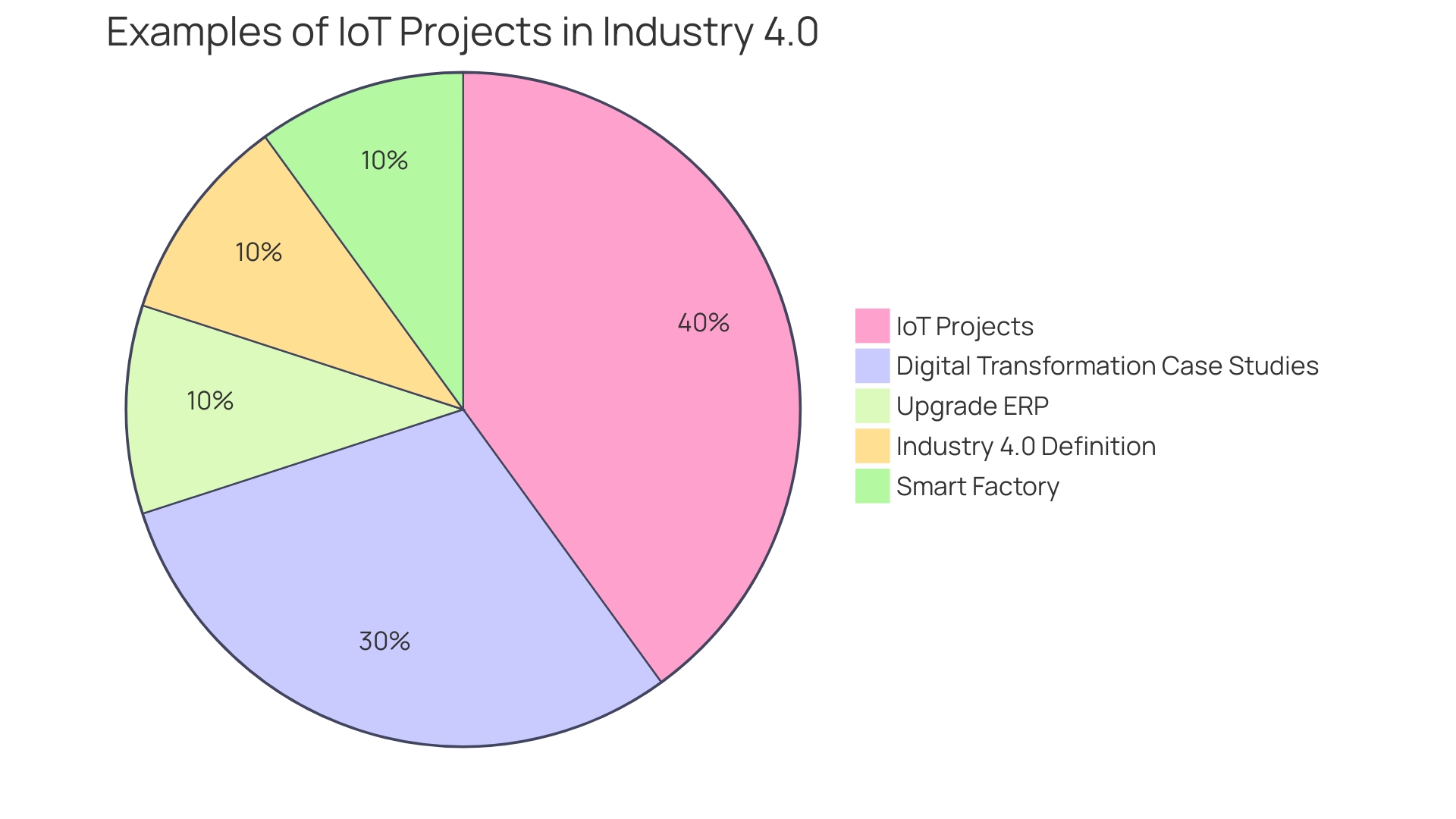
[Article] The Role of IoT in Digital Transformation
The Internet of Things (IoT) is revolutionizing the industrial landscape by enabling a new level of connectivity across equipment and systems. This connectivity is the cornerstone of digital transformation, allowing businesses to harness data, improve operational efficiency, and create innovative services that add value for customers. IoT consulting firms play a crucial role in this transformation by guiding businesses through the complexities of IoT integration and helping them seize the opportunities it presents.
IoT is not just about the technology itself but how it can be strategically applied to address existing challenges and enhance business operations. It combines various technologies to deliver better outcomes, often for less cost. For instance, manufacturers are employing IoT to integrate data sources, achieve higher operational equipment efficiency (OEE), and reduce costs, which are vital KPIs in production environments.
This approach is synonymous with Industry 4.0, which represents the fusion of advanced technologies to overhaul manufacturing processes.
Digital transformation, powered by IoT, is a strategic endeavor that requires organizations to adopt new technologies to improve processes and services significantly. By enabling automation of menial tasks, IoT allows employees to focus on higher-value work, thereby fostering rapid problem-solving and self-sufficiency within enterprises.
Real-world case studies of industrial digital transformation highlight the diversity and potential of IoT projects. These studies provide insights into the objectives and outcomes of current IoT implementations, helping other businesses identify best practices and common challenges. For example, an upgraded Enterprise Resource Planning (ERP) system is often cited as a foundational step towards digital transformation, affecting everything from process optimization to customer interactions.
As we navigate the post-pandemic world, digital transformation has shifted from a 'nice-to-have' to a necessity. Businesses are expected to increase their investments in emerging technologies like AI, AR/VR, and IoT. The agility of digital transformation is exemplified by the ability to deliver value through iterative development and customer feedback—a methodology central to the Agile philosophy.
The impact of IoT on businesses is clear, with smart home automation becoming increasingly prevalent and the global market for such technologies projected to reach $40 billion by 2020. The transformative power of IoT is not limited to consumer applications; it extends to all domains where technology can significantly enhance operational efficiency and customer satisfaction.
In conclusion, IoT consulting firms are indispensable partners for businesses looking to navigate the intricate IoT ecosystem and harness its full potential for digital transformation. These firms provide the expertise needed to implement IoT solutions that align with strategic business goals, ultimately leading to improved efficiency, innovation, and competitive advantage.
[Whitepaper] Best Practices for IoT Implementation
Harnessing the transformative power of the Internet of Things (IoT) can be a game-changer for businesses, but it comes with its complexities. To navigate this intricate domain, it's essential to understand the technological details and potential challenges of IoT projects, as well as to embrace best practices for successful implementation. A pivotal component is recognizing the importance of consulting services that specialize in IoT, which can provide invaluable guidance through this process.
One must consider various factors when adopting IoT technology. Costs can range dramatically based on the scope and scale of deployment, with hardware, software, and connectivity requirements being just the tip of the iceberg. An adept IoT consulting firm will help chart out a clear data strategy, define a robust IoT architecture, and ensure that security is a top priority, safeguarding against potential breaches.
In the context of Industry 4.0, utilizing modern tech stack elements or supporting technologies allows manufacturers to integrate data sources, streamline operations, and boost overall efficiency. However, it's crucial to acknowledge that there is no one-size-fits-all approach; what works for industries with a large on-premises footprint may not suit those with operational goals centered around customer satisfaction and revenue.
Case studies, such as those detailed in our Industrial IoT Case Study Report, provide concrete examples of IoT in action. These studies begin with an overview of the business and its mission, followed by an examination of technical components and the roles of various technology providers.
Amidst this, Coffee IT stands out as a company that excels in combining hardware and mobile apps to create impactful IoT solutions. They emphasize the importance of addressing real-world challenges with a blend of technical prowess and innovative thinking.
Experts in the field agree that scalability, security, and reliability should be at the forefront of any IoT project from day one. Flexibility and continuous innovation are also crucial, allowing for rapid learning and iteration during the pilot stage. These insights underscore the value of a tailored, strategic approach to IoT integration, one that a specialized IoT consulting company can adeptly provide.
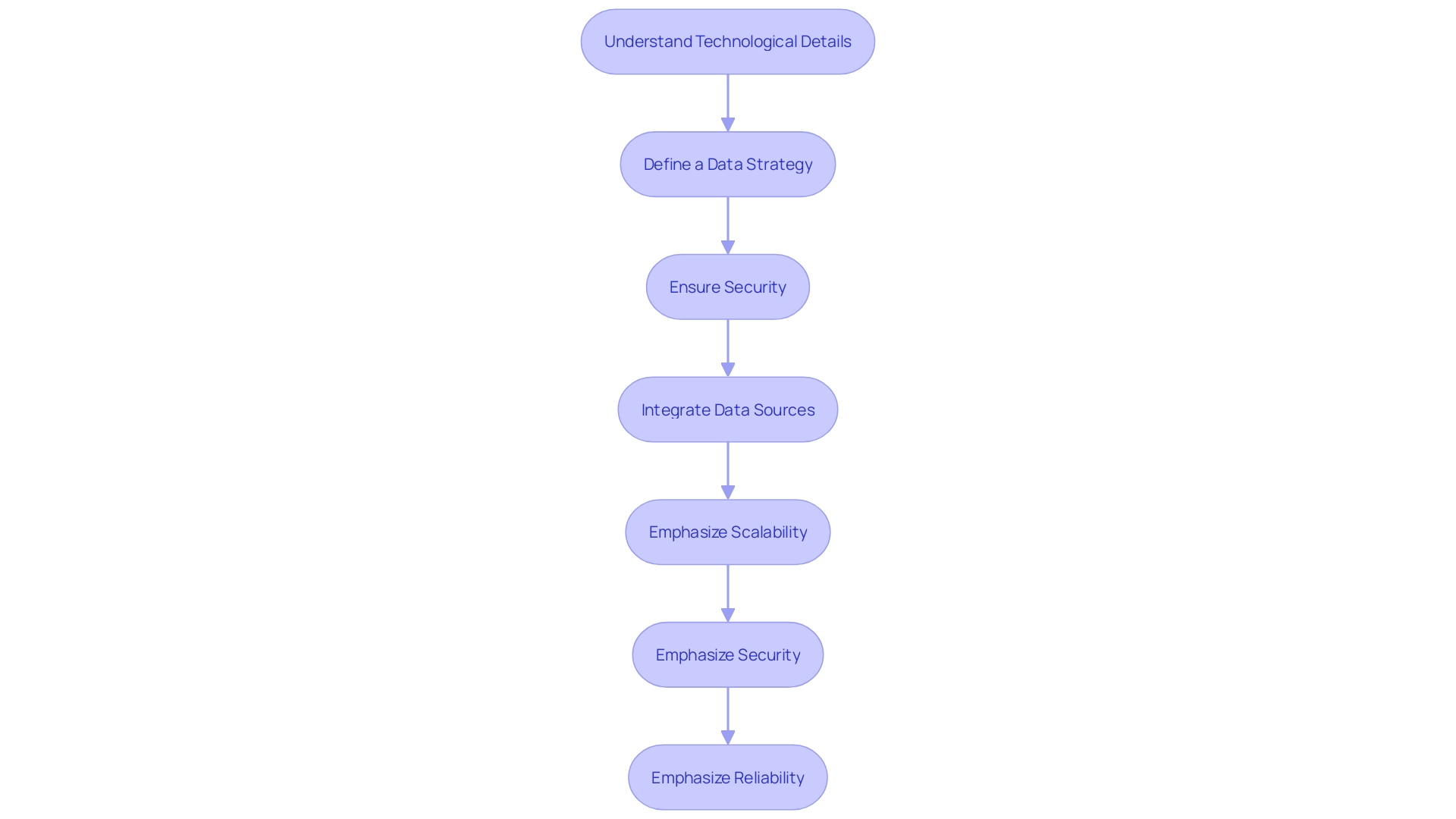
[Webinar] IoT Consulting: Key Considerations and Success Factors
The convergence of the Internet of Things (IoT) into business strategies is becoming increasingly crucial for driving operational efficiency and innovation. As companies navigate the complexities of integrating IoT into their operations, the importance of expert guidance cannot be overstated. Our recent webinar delved into the multifaceted considerations businesses must weigh when seeking IoT consulting services, underscoring the pivotal role these services play in unlocking the full potential of IoT technologies.
IoT consulting firms provide indispensable expertise in developing and executing a comprehensive IoT strategy. They assist businesses in identifying the economic potential of IoT products and systems and in crafting a solution monetization framework. From defining a clear data strategy to designing the IoT architecture that aligns with specific business needs, these consultants ensure the seamless flow of data across technology layers.
Moreover, they address critical security concerns, equipping businesses with strategies to safeguard their technological roadmap against potential cyber threats.
The webinar highlighted that IoT consulting extends beyond technological implementation, addressing the operational goals of manufacturers. It’s crucial for businesses to understand that the architecture and goals for Industry 4.0 can vary significantly. Some manufacturers may prioritize an on-premises tech architecture focusing on efficiency and cost savings, while others might emphasize customer satisfaction and revenue through smart-connected products.
To further solidify the understanding of these concepts, the webinar provided insights into real-world applications of IoT. Through case studies, businesses were able to grasp the technical details and key challenges associated with successful IoT projects. These case studies featured profiles of businesses that have effectively implemented IoT solutions, revealing the tangible benefits such as higher Overall Equipment Effectiveness (OEE) and the ability to achieve key performance indicators relevant to their production setups.
Our webinar also emphasized the importance of ongoing education for teams involved with IoT software. Best practices such as tailored training sessions, access to comprehensive resources, and hands-on, cross-functional workshops were identified as critical for fostering a knowledgeable and skilled workforce capable of leveraging new IoT solutions.
In conclusion, engaging with a proficient IoT consulting service is more than a strategic move; it is an essential step for businesses committed to achieving excellence in the digital age. The insights shared during the webinar are not only a testament to the transformative power of IoT but also serve as a roadmap for businesses eager to embark on this technological journey.
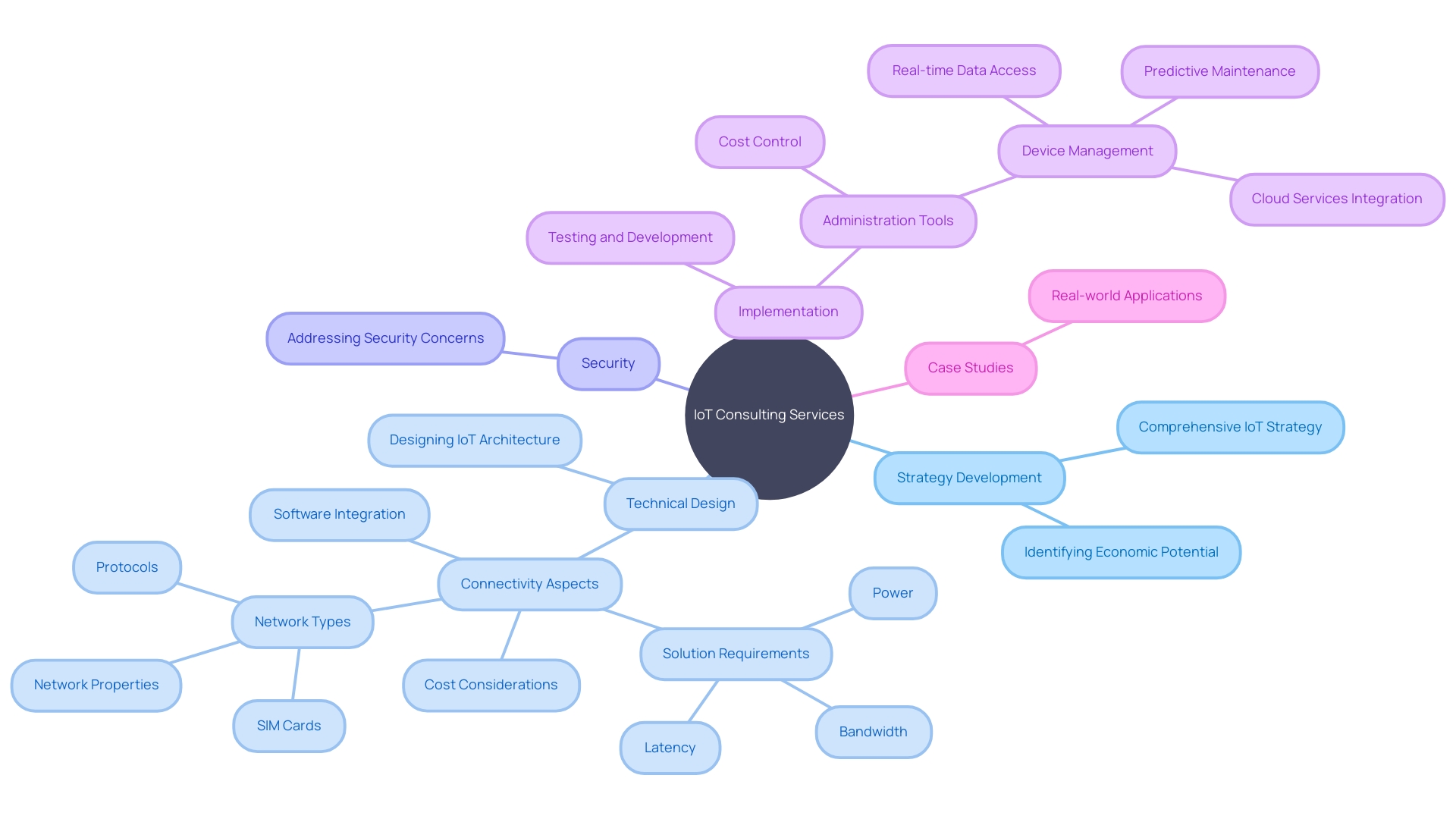
Conclusion
In the fast-paced world of technological innovation, IoT consulting has emerged as a critical service, guiding businesses through the complexities of integrating IoT into their operations. The comprehensive analysis of IoT consulting, as illustrated in the article, underscores the multifaceted role of experts in developing and executing strategies that ensure IoT initiatives are secure, scalable, and aligned with business objectives.
The journey through IoT consulting begins with an understanding of the company's needs, followed by the design of a tailored IoT architecture. Real-world case studies have provided invaluable insights, demonstrating the tangible benefits of IoT integration in various industries, including manufacturing and healthcare. These examples highlight the importance of a strategic approach to IoT adoption, one that considers all aspects from data strategy and technical components to cost considerations and security measures.
IoT consulting services are indispensable in today's digital transformation landscape. They offer a range of expertise, from technical know-how to industry-specific guidance, ensuring that businesses can navigate the IoT ecosystem confidently. As companies continue to invest in emerging technologies, the role of IoT consulting in driving innovation and operational efficiency becomes even more pronounced.
As we look to the future, it is clear that the influence of IoT will only continue to grow, reshaping industries and daily life. IoT consulting firms are at the heart of this transformation, providing the expertise necessary to harness the full potential of IoT technologies. By partnering with the right consulting firm, businesses are well-positioned to thrive in the era of digital transformation, leveraging IoT solutions for enhanced efficiency, innovation, and competitive advantage.





